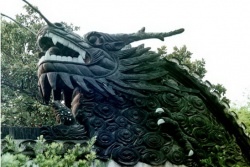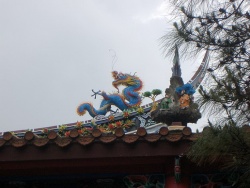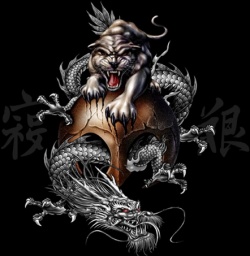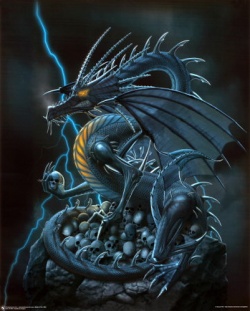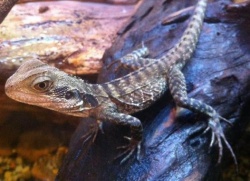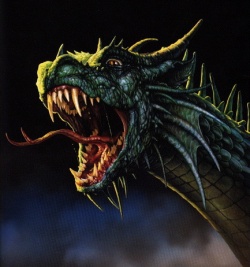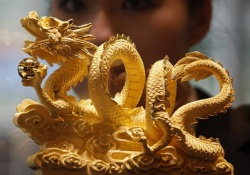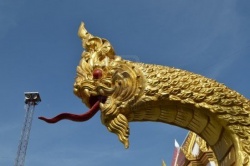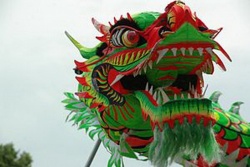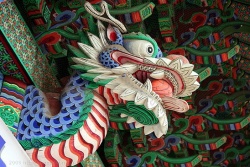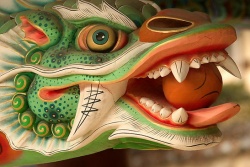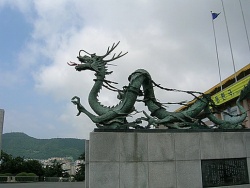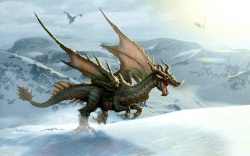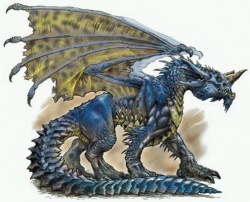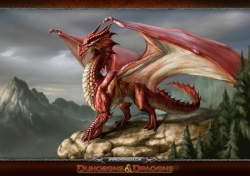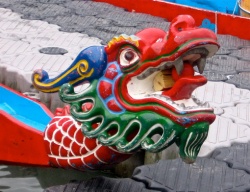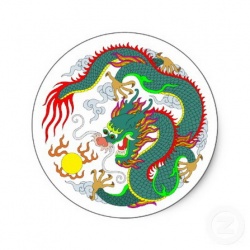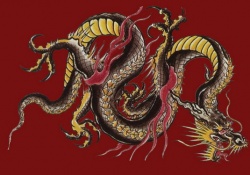Difference between revisions of "Chinese dragon"
| (5 intermediate revisions by 3 users not shown) | |||
| Line 1: | Line 1: | ||
[[File:ThreeToeDragon.jpg|thumb|250px|]][[File:Temple Dragon.jpg|thumb|250px|]][[File:T-scary.jpg|thumb|250px|]][[File:Skull-Dragon1.jpg|thumb|250px|]][[File:Ragon.JPG|thumb|250px|]][[File:Picture1 big.jpg|thumb|250px|]][[File:Mal-fear.jpg|thumb|250px|]][[File:01840 MG.jpg|thumb|250px|]][[File:1386239.jpg|thumb|250px|]][[File:3 Chinese draak.jpg|thumb|250px|]][[File:41a650a.560.jpg|thumb|250px|]][[File:550,075,f.jpg|thumb|250px|]][[File:590411.jpg|thumb|250px|]][[File:78-1280-800.jpg|thumb|250px|]][[File:Dragodggg12.jpg|thumb|250px|]][[File:Dragon cx.jpg|thumb|250px|]][[File:IMG 5768.JPG|thumb|250px|]] | [[File:ThreeToeDragon.jpg|thumb|250px|]][[File:Temple Dragon.jpg|thumb|250px|]][[File:T-scary.jpg|thumb|250px|]][[File:Skull-Dragon1.jpg|thumb|250px|]][[File:Ragon.JPG|thumb|250px|]][[File:Picture1 big.jpg|thumb|250px|]][[File:Mal-fear.jpg|thumb|250px|]][[File:01840 MG.jpg|thumb|250px|]][[File:1386239.jpg|thumb|250px|]][[File:3 Chinese draak.jpg|thumb|250px|]][[File:41a650a.560.jpg|thumb|250px|]][[File:550,075,f.jpg|thumb|250px|]][[File:590411.jpg|thumb|250px|]][[File:78-1280-800.jpg|thumb|250px|]][[File:Dragodggg12.jpg|thumb|250px|]][[File:Dragon cx.jpg|thumb|250px|]][[File:IMG 5768.JPG|thumb|250px|]] | ||
| − | |||
| − | [[Chinese dragons]] [[traditionally]] [[symbolize]] potent and [[auspicious]] [[powers]], particularly control over [[water]], rainfall, hurricane, and floods. The [[dragon]] is also a [[symbol]] of [[power]], strength, and good [[luck]]. With this, the [[Emperor]] of [[China]] usually used the [[dragon]] as a [[symbol]] of his imperial [[power]] and strength. | + | |
| + | |||
| + | |||
| + | |||
| + | |||
| + | |||
| + | |||
| + | |||
| + | |||
| + | [[Chinese dragons]] are legendary creatures in {{Wiki|Chinese}} [[mythology]] and {{Wiki|folklore}}. In {{Wiki|Chinese}} [[art]], [[dragons]] are typically portrayed as long, scaled, [[serpentine]] creatures with four {{Wiki|legs}}. In {{Wiki|yin and yang}} {{Wiki|terminology}}, a [[dragon]] is [[yang]] and complements a [[yin]] [[fenghuang]] ("{{Wiki|Chinese}} {{Wiki|phoenix}}"). | ||
| + | |||
| + | [[Chinese dragons]] [[traditionally]] [[symbolize]] potent and [[auspicious]] [[powers]], particularly control over [[water]], rainfall, hurricane, and floods. The [[dragon]] is also a [[symbol]] of [[power]], strength, and good [[luck]]. With this, the [[Emperor]] of [[China]] usually used the [[dragon]] as a [[symbol]] of his {{Wiki|imperial}} [[power]] and strength. | ||
In {{Wiki|Chinese}} daily [[language]], {{Wiki|excellent}} and [[outstanding]] [[people]] are compared to the [[dragon]] while incapable [[people]] with no achievements are compared with other, disesteemed creatures, such as the worm. A number of {{Wiki|Chinese}} proverbs and idioms feature references to the [[dragon]], for example: "Hoping one's son will become a [[dragon]]" (望子成龍, i.e. be as a [[dragon]]). | In {{Wiki|Chinese}} daily [[language]], {{Wiki|excellent}} and [[outstanding]] [[people]] are compared to the [[dragon]] while incapable [[people]] with no achievements are compared with other, disesteemed creatures, such as the worm. A number of {{Wiki|Chinese}} proverbs and idioms feature references to the [[dragon]], for example: "Hoping one's son will become a [[dragon]]" (望子成龍, i.e. be as a [[dragon]]). | ||
| + | |||
==[[Symbolic]] value== | ==[[Symbolic]] value== | ||
| − | |||
| − | + | Historically, the [[dragon]] was the [[symbol]] of the [[Emperor]] of [[China]]. In the {{Wiki|Zhou Dynasty}}, the 5-clawed [[dragon]] was assigned to the Son of [[Heaven]], the 4-clawed [[dragon]] to the [[nobles]] (zhuhou, seigneur), and the 3-clawed [[dragon]] to the ministers (daifu). In the {{Wiki|Qin Dynasty}}, the 5-clawed foot [[dragon]] was assigned to represent the [[Emperor]] while the 4-clawed and 3-clawed [[dragons]] were assigned to the commoners. The [[dragon]] in the {{Wiki|Qing Dynasty}} appeared on national flags. | |
| − | + | The [[dragon]] is sometimes used in the {{Wiki|West}} as a national {{Wiki|emblem}} of [[China]]. However, this usage within both the {{Wiki|People's Republic of China}} and the {{Wiki|Republic}} of [[China]] on {{Wiki|Taiwan}} as the [[symbol]] of {{Wiki|nation}} is not common. Instead, it is generally used as the [[symbol]] of {{Wiki|culture}}. In {{Wiki|Hong Kong}}, the [[dragon]] is part of the design of Brand {{Wiki|Hong Kong}}, a [[symbol]] used to promote {{Wiki|Hong Kong}} as an international brand [[name]]. | |
| − | Sometimes {{Wiki|Chinese}} [[people]] use the term "Descendants of the [[Dragon]]" (simplified {{Wiki|Chinese}}: 龙的传人; [[traditional]] {{Wiki|Chinese}}: 龍的傳人) as a sign of {{Wiki|ethnic}} [[identity]], as part of a trend started in the 1970s when different Asian nationalities were looking for [[animal]] [[symbols]] for {{Wiki|representations}}. The {{Wiki|wolf}} was used among the {{Wiki|Mongols}}, the {{Wiki|monkey}} among [[Tibetans]]. | + | In European-influenced cultures, the [[dragon]] has aggressive, warlike connotations and it is conjectured that the {{Wiki|Chinese}} government wishes to avoid using it as a [[symbol]], but most {{Wiki|Chinese}} disagree with this [[decision]]. [[Westerners]] only sometimes confuse the disposition of the [[dragon]] with the aggressive {{Wiki|Western}} [[dragon]]. |
| + | |||
| + | Sometimes {{Wiki|Chinese}} [[people]] use the term "Descendants of the [[Dragon]]" (simplified {{Wiki|Chinese}}: 龙的传人; [[traditional]] {{Wiki|Chinese}}: 龍的傳人) as a sign of {{Wiki|ethnic}} [[identity]], as part of a trend started in the 1970s when different {{Wiki|Asian}} nationalities were looking for [[animal]] [[symbols]] for {{Wiki|representations}}. The {{Wiki|wolf}} was used among the {{Wiki|Mongols}}, the {{Wiki|monkey}} among [[Tibetans]]. | ||
In {{Wiki|Chinese}} {{Wiki|culture}} today, the [[dragon]] is mostly used for decorative purposes. It is a {{Wiki|taboo}} to disfigure a depiction of a [[dragon]]. | In {{Wiki|Chinese}} {{Wiki|culture}} today, the [[dragon]] is mostly used for decorative purposes. It is a {{Wiki|taboo}} to disfigure a depiction of a [[dragon]]. | ||
| + | |||
==Regional variations across {{Wiki|Asia}}== | ==Regional variations across {{Wiki|Asia}}== | ||
| + | |||
While depictions of the [[dragon]] in [[art]] and {{Wiki|literature}} are largely consistent throughout the cultures in which it is found, there are some regional differences. The remainder of this article deals with aspects common across cultures, as well as {{Wiki|features}} peculiar to {{Wiki|cultural}} [[China]]. | While depictions of the [[dragon]] in [[art]] and {{Wiki|literature}} are largely consistent throughout the cultures in which it is found, there are some regional differences. The remainder of this article deals with aspects common across cultures, as well as {{Wiki|features}} peculiar to {{Wiki|cultural}} [[China]]. | ||
| − | For more [[information]] on peculiarities in the depiction of the [[dragon]] in other Asian cultures, see: | + | For more [[information]] on peculiarities in the depiction of the [[dragon]] in other {{Wiki|Asian}} cultures, see: |
| + | |||
* [[Druk]], the {{Wiki|Thunder}} [[Dragon]] of {{Wiki|Bhutanese}} [[mythology]] | * [[Druk]], the {{Wiki|Thunder}} [[Dragon]] of {{Wiki|Bhutanese}} [[mythology]] | ||
* [[Japanese]] [[dragon]] | * [[Japanese]] [[dragon]] | ||
* [[Korean]] [[dragon]] | * [[Korean]] [[dragon]] | ||
| − | * [[Nāga]] (or [[Naga]]), a [[Hindu]] or [[Buddhist]] [[deity]] often depicted as a [[king]] cobra | + | * [[Nāga]] (or [[Naga]]), a [[Hindu]] or [[Buddhist]] [[deity]] often depicted as a [[king]] {{Wiki|cobra}} |
| − | * Yaazhi {{Wiki|South}} [[Indian]] or Tamil [[mythical]] creature | + | * Yaazhi {{Wiki|South}} [[Indian]] or [[Tamil]] [[mythical]] creature |
* [[Vietnamese]] [[dragon]] | * [[Vietnamese]] [[dragon]] | ||
| − | * Nepalese [[dragon]] as depicted with Bahirav | + | * {{Wiki|Nepalese}} [[dragon]] as depicted with Bahirav |
| + | |||
==[[Dragon]] {{Wiki|worship}}== | ==[[Dragon]] {{Wiki|worship}}== | ||
| + | |||
===Origin=== | ===Origin=== | ||
| − | |||
| − | The coiled {{Wiki|snake}} or [[dragon]] [[form]] played an important role in early {{Wiki|Chinese}} {{Wiki|culture}}. The [[character]] for "[[dragon]]" in the earliest {{Wiki|Chinese}} [[writing]] has a similar coiled [[form]], as do later jade [[dragon]] amulets from the [[Shang]] period. | + | The origin of the [[Chinese dragon]] is not certain. The presence of [[dragons]] within {{Wiki|Chinese}} {{Wiki|culture}} dates back several thousands of years with the discovery of a [[dragon]] statue dating back to the fifth millennium BC from the Yangshao {{Wiki|culture}} in {{Wiki|Henan}} in 1987, and [[jade]] badges of rank in coiled [[form]] have been excavated from the Hongshan {{Wiki|culture}} circa 4700-2900 BC. |
| + | |||
| + | The coiled {{Wiki|snake}} or [[dragon]] [[form]] played an important role in early {{Wiki|Chinese}} {{Wiki|culture}}. The [[character]] for "[[dragon]]" in the earliest {{Wiki|Chinese}} [[writing]] has a similar coiled [[form]], as do later [[jade]] [[dragon]] amulets from the [[Shang]] period. | ||
| + | |||
| + | {{Wiki|Ancient}} {{Wiki|Chinese}} referred to unearthed dinosaur [[bones]] as [[dragon]] [[bones]] and documented them as such. For example, [[Chang]] Qu in 300 BC documents the discovery of "[[dragon]] [[bones]]" in {{Wiki|Sichuan}}. The {{Wiki|modern}} {{Wiki|Chinese}} [[word]] for dinosaur is konglong (恐龍), and villagers in {{Wiki|central}} [[China]] have long unearthed fossilized "[[dragon]] [[bones]]" for use in [[traditional]] {{Wiki|medicines}}, a practice that continues today. | ||
| − | |||
The binomial [[name]] for a variety of dinosaur discovered in [[China]], Mei long, in {{Wiki|Chinese}} (寐 mèi and 龙 lóng) means "[[sleeping]] [[dragon]]." Fossilized {{Wiki|remains}} of Mei long have been found in [[China]] in a [[sleeping]] and coiled [[form]], with the dinosaur nestling its snout beneath one of its forelimbs while encircling its tail around its entire [[body]]. | The binomial [[name]] for a variety of dinosaur discovered in [[China]], Mei long, in {{Wiki|Chinese}} (寐 mèi and 龙 lóng) means "[[sleeping]] [[dragon]]." Fossilized {{Wiki|remains}} of Mei long have been found in [[China]] in a [[sleeping]] and coiled [[form]], with the dinosaur nestling its snout beneath one of its forelimbs while encircling its tail around its entire [[body]]. | ||
| − | Some[who?] have further suggested that the [[Chinese dragon]] [[form]] comes from stylized depictions of [[existing]] [[animals]], such as {{Wiki|snakes}}, {{Wiki|fish}}, or crocodiles. A [[view]] advocated by He Xin is that the early [[dragon]] depicted a species of crocodile, specifically, Crocodylus porosus, the saltwater crocodile, which is the largest living reptile, and once ranged into [[China]] during {{Wiki|ancient}} times. The crocodile is known[by whom?] to be able to accurately [[sense]] changes in [[air]] pressure, and be able to [[sense]] coming [[rain]]. This may have been[vague] the origin of the dragon's [[mythical]] attributes in controlling the weather, especially the [[rain]]. The association with the crocodile is also supported by the [[view]][by whom?] in {{Wiki|ancient}} times that large crocodiles are a variety of [[dragon]]. For example, in the Story of Zhou Chu, about the [[life]] of a Jin Dynasty [[warrior]], he is said to have killed a "[[dragon]]" that infested the waters of his home village, which appears to have been a crocodile. | + | Some[who?] have further suggested that the [[Chinese dragon]] [[form]] comes from stylized depictions of [[existing]] [[animals]], such as {{Wiki|snakes}}, {{Wiki|fish}}, or crocodiles. A [[view]] advocated by He Xin is that the early [[dragon]] depicted a {{Wiki|species}} of {{Wiki|crocodile}}, specifically, Crocodylus porosus, the saltwater {{Wiki|crocodile}}, which is the largest living reptile, and once ranged into [[China]] during {{Wiki|ancient}} times. The {{Wiki|crocodile}} is known[by whom?] to be able to accurately [[sense]] changes in [[air]] pressure, |
| + | |||
| + | and be able to [[sense]] coming [[rain]]. This may have been[vague] the origin of the [[dragon's]] [[mythical]] [[attributes]] in controlling the weather, especially the [[rain]]. The association with the {{Wiki|crocodile}} is also supported by the [[view]][by whom?] in {{Wiki|ancient}} times that large crocodiles are a variety of [[dragon]]. For example, in the Story of Zhou Chu, about the [[life]] of a [[wikipedia:Jin Dynasty (265-420)|Jin Dynasty]] [[warrior]], he is said to have killed a "[[dragon]]" that infested the waters of his home village, which appears to have been a {{Wiki|crocodile}}. | ||
| + | |||
| + | |||
| + | Some [[scholars]][who?] believe that the [[Chinese dragon]] [[form]] originated from totems of different tribes in [[China]], as a merger of totems of various tribes consequential to tribal mergers. Legendary figures like Nüwa (女媧) and {{Wiki|Fuxi}} ([[伏羲]]) are depicted as having {{Wiki|snake}} [[bodies]]. Some [[scholars]][who?] have noted that a [[myth]] arose that the first legendary [[Emperor]] of [[China]], [[Huangdi]] ([[黃帝]], [[Yellow]] [[Emperor]]) used a {{Wiki|snake}} for his coat of arms. According to the [[myth]], every [[time]] he conquered another tribe, he incorporated his defeated enemy's {{Wiki|emblem}} into his [[own]], thus explains why the [[dragon]] appears to have {{Wiki|features}} of various [[animals]]. | ||
| − | |||
===[[Mythical]] creature=== | ===[[Mythical]] creature=== | ||
| − | |||
| − | : The [[people]] paint the dragon's [[shape]] with a horse's {{Wiki|head}} and a snake's tail. Further, there are expressions as 'three joints' and 'nine resemblances' (of the [[dragon]]), to wit: from {{Wiki|head}} to shoulder, from shoulder to breast, from breast to tail. These are the joints; as to the nine resemblances, they are the | + | From its origins as totems or the stylized depiction of natural creatures, the [[Chinese dragon]] evolved to become a [[mythical]] [[animal]]. The {{Wiki|Han Dynasty}} [[scholar]] Wang [[Fu]] recorded {{Wiki|Chinese}} [[myths]] that long [[dragons]] had nine anatomical resemblances. |
| + | |||
| + | |||
| + | : The [[people]] paint the [[dragon's]] [[shape]] with a [[horse's]] {{Wiki|head}} and a snake's tail. Further, there are {{Wiki|expressions}} as 'three joints' and 'nine resemblances' (of the [[dragon]]), to wit: from {{Wiki|head}} to shoulder, from shoulder to {{Wiki|breast}}, from {{Wiki|breast}} to tail. These are the joints; as to the nine resemblances, they are the | ||
| − | + | following: his horns resemble those of a stag, his {{Wiki|head}} that of a {{Wiki|camel}}, his [[eyes]] those of a [[demon]], his neck that of a {{Wiki|snake}}, his belly that of a clam (shen, 蜃), his scales those of a carp, his claws those of an {{Wiki|eagle}}, his soles those of a {{Wiki|tiger}}, his {{Wiki|ears}} those of a {{Wiki|cow}}. Upon his {{Wiki|head}} he has a thing like a broad eminence (a big lump), called [chimu] (尺木). If a [[dragon]] has no [chimu], he cannot ascend to the sky. | |
| − | [[ | + | Further sources give variant lists of the nine [[animal]] resemblances. {{Wiki|Sinologist}} Henri Doré lists these {{Wiki|characteristics}} of an [[Wikipedia:Authenticity|authentic]] [[dragon]]: "The horns of a {{Wiki|deer}}. The {{Wiki|head}} of a {{Wiki|crocodile}}. A demon's [[eyes]]. The neck of a {{Wiki|snake}}. A tortoise's viscera. A hawk's claws. The palms of a |
| − | |||
| − | [[ | + | {{Wiki|tiger}}. A cow's {{Wiki|ears}}. And it hears through its horns, its {{Wiki|ears}} {{Wiki|being}} deprived of all [[power]] of [[hearing]]." He notes that, "Others [[state]] it has a rabbit's [[eyes]], a frog's belly, a carp's scales." The {{Wiki|anatomy}} of other legendary creatures, [[including]] the chimera and manticore, is similarly amalgamated from fierce [[animals]]. |
| − | + | [[Chinese dragons]] were considered to be {{Wiki|physically}} concise. Of the 117 scales, 81 are of the [[yang]] [[essence]] (positive) while 36 are of the [[yin]] [[essence]] (negative). Initially, the [[dragon]] was {{Wiki|benevolent}}, [[wise]] and just but the [[Buddhists]] introduced the {{Wiki|concept}} of [[malevolent]] [[influence]] among some [[dragons]]. Just as [[water]] destroys, they said, so can some [[dragons]] destroy via floods, tidal waves and storms. They suggested that some of the worst floods were believed to have been the result of a {{Wiki|mortal}} upsetting a [[dragon]]. | |
| − | |||
| − | In some circles, it is considered bad [[luck]] to depict a [[dragon]] facing downwards, as it is seen as disrespectful to place a [[dragon]] in such [[manner]] that it cannot ascend to the sky. Also, depictions of [[dragons]] in tattoos are prevailent as they are [[symbols]] of strength and [[power]], especially criminal organisations where [[dragons]] hold a [[meaning]] all on their own. As such, it is believed that one must be fierce and strong enough, hence earning the right to wear the [[dragon]] on his {{Wiki|skin}}, lest his [[luck]] be consumed by the [[dragons]] | + | Many pictures of {{Wiki|oriental}} [[dragons]] show a flaming {{Wiki|pearl}} under their [[chin]]. The {{Wiki|pearl}} is associated with [[wealth]], good [[luck]], and {{Wiki|prosperity}}. |
| + | |||
| + | |||
| + | [[Chinese dragons]] are occasionally depicted with bat-like wings growing out of the front limbs, but most do not have wings, as their ability to fly (and control rain/water, etc.) are [[mystical]] and not seen as a result of their [[physical]] [[attributes]]. | ||
| + | |||
| + | This description accords with the artistic depictions of the [[dragon]] down to the {{Wiki|present}} day. The [[dragon]] has also acquired an almost [[unlimited]] range of [[supernatural powers]]. It is said to be able to disguise itself as a silkworm, or become as large as our entire [[universe]]. It can fly among the clouds or hide in [[water]] (according to the Guanzi). It can [[form]] clouds, can turn into [[water]], can change {{Wiki|color}} as an ability to blend in with their surroundings, as an effective [[form]] of {{Wiki|camouflage}} or glow in the dark (according to the [[Shuowen Jiezi]]). | ||
| + | |||
| + | In many other countries, folktales speak of the [[dragon]] having all the [[attributes]] of the other 11 creatures of the {{Wiki|zodiac}}, this includes the whiskers of the {{Wiki|Rat}}, the face and horns of the {{Wiki|Ox}}, the claws and {{Wiki|teeth}} of the {{Wiki|Tiger}}, the belly of the {{Wiki|Rabbit}}, the [[body]] of the {{Wiki|Snake}}, the {{Wiki|legs}} of the [[Horse]], the beard of the {{Wiki|Goat}}, the wit (or {{Wiki|brain}}) of the {{Wiki|Monkey}}, the crest of the {{Wiki|Rooster}}, the {{Wiki|ears}} of the {{Wiki|Dog}} and the snout of the {{Wiki|Pig}}. | ||
| + | |||
| + | In some circles, it is considered bad [[luck]] to depict a [[dragon]] facing downwards, as it is seen as disrespectful to place a [[dragon]] in such [[manner]] that it cannot ascend to the sky. Also, depictions of [[dragons]] in tattoos are prevailent as they are [[symbols]] of strength and [[power]], especially criminal organisations where [[dragons]] hold a [[meaning]] all on their [[own]]. As such, it is believed that one must be fierce and strong enough, hence earning the right to wear the [[dragon]] on his {{Wiki|skin}}, lest his [[luck]] be consumed by the [[dragons]] | ||
| + | |||
| + | |||
| + | ===[[Ruler]] of weather and [[water]]=== | ||
| − | |||
[[Chinese dragons]] are strongly associated with [[water]] in popular [[belief]]. They are believed to be the rulers of moving [[bodies]] of [[water]], such as waterfalls, [[rivers]], or seas. They can show themselves as [[water]] spouts (tornado or twister over [[water]]). In this capacity as the rulers of [[water]] and weather, the [[dragon]] is more {{Wiki|anthropomorphic}} in [[form]], often depicted as a humanoid, dressed in a king's costume, but with a [[dragon]] {{Wiki|head}} wearing a king's headdress. | [[Chinese dragons]] are strongly associated with [[water]] in popular [[belief]]. They are believed to be the rulers of moving [[bodies]] of [[water]], such as waterfalls, [[rivers]], or seas. They can show themselves as [[water]] spouts (tornado or twister over [[water]]). In this capacity as the rulers of [[water]] and weather, the [[dragon]] is more {{Wiki|anthropomorphic}} in [[form]], often depicted as a humanoid, dressed in a king's costume, but with a [[dragon]] {{Wiki|head}} wearing a king's headdress. | ||
| − | There are four major [[Dragon]] [[Kings]], representing each of the four seas: the {{Wiki|East}} Sea (corresponding to the {{Wiki|East}} [[China]] Sea), the {{Wiki|South}} Sea (corresponding to the {{Wiki|South}} [[China]] Sea), the {{Wiki|West}} Sea (sometimes seen as the [[Indian]] Ocean and [[beyond]]), and the {{Wiki|North}} Sea (sometimes seen as [[Lake Baikal]]). | + | There are four major [[Dragon]] [[Kings]], representing each of the [[four seas]]: the {{Wiki|East}} Sea ([[corresponding]] to the {{Wiki|East}} [[China]] Sea), the {{Wiki|South}} Sea ([[corresponding]] to the {{Wiki|South}} [[China]] Sea), the {{Wiki|West}} Sea (sometimes seen as the [[Indian]] Ocean and [[beyond]]), and the {{Wiki|North}} Sea (sometimes seen as [[Lake Baikal]]). |
| − | Because of this association, they are seen as "in charge" of water-related weather [[phenomenon]]. In premodern times, many {{Wiki|Chinese}} villages (especially those close to [[rivers]] and seas) had [[temples]] dedicated to their local "[[dragon king]]". In times of drought or flooding, it was customary for the local gentry and government officials to lead the community in [[offering]] sacrifices and conducting other [[religious]] [[rites]] to appease the [[dragon]], either to ask for [[rain]] or a [[cessation]] thereof. | + | Because of this association, they are seen as "in charge" of water-related weather [[phenomenon]]. In premodern times, many {{Wiki|Chinese}} villages (especially those close to [[rivers]] and seas) had [[temples]] dedicated to their local "[[dragon king]]". In times of drought or flooding, it was customary for the local gentry and government officials to lead the {{Wiki|community}} in [[offering]] [[sacrifices]] and conducting other [[religious]] [[rites]] to appease the [[dragon]], either to ask for [[rain]] or a [[cessation]] thereof. |
| − | The [[King]] of Wu-Yue in the Five Dynasties and Ten Kingdoms period was often known as the "[[Dragon King]]" or the "Sea [[Dragon King]]" [[because of]] his extensive hydro-engineering schemes which "tamed" the sea. | + | The [[King]] of Wu-Yue in the [[Five Dynasties]] and Ten {{Wiki|Kingdoms}} period was often known as the "[[Dragon King]]" or the "Sea [[Dragon King]]" [[because of]] his extensive hydro-engineering schemes which "tamed" the sea. |
| − | |||
| − | + | ===[[Symbol]] of {{Wiki|imperial}} authority=== | |
| − | |||
| − | In some {{Wiki|Chinese}} legends, an [[Emperor]] might be born with a birthmark in the [[shape]] of a [[dragon]]. For example, one legend tells the tale of a peasant born with a [[dragon]] birthmark who eventually overthrows the [[existing]] dynasty and founds a new one; another legend might tell of the {{Wiki|prince}} in hiding from his enemies who is identified by his [[dragon]] birthmark. | + | According to {{Wiki|Chinese}} legend, both {{Wiki|Chinese}} primogenitors, the earliest {{Wiki|Emperors}}, [[Yandi]] and [[Huangdi]], were closely related to 'Long' ([[Chinese Dragon]]). At the end of his reign, the first legendary [[Emperor]], [[Huangdi]], was said to have been immortalized into a [[dragon]] that resembled his {{Wiki|emblem}}, and ascended to [[Heaven]]. The other legendary [[Emperor]], Huangdi's brother, [[Yandi]] was born by his mother's {{Wiki|telepathy}} with a [[mythic]] [[dragon]]. Since the {{Wiki|Chinese}} consider [[Huangdi]] and [[Yandi]] as their {{Wiki|ancestors}}, they sometimes refer to themselves as "the descendants of the [[dragon]]". This legend also contributed towards the use of the [[Chinese dragon]] as a [[symbol]] of {{Wiki|imperial}} [[power]]. |
| + | |||
| + | The [[dragon]], especially [[yellow]] or golden [[dragons]] with five claws on each foot, was a [[symbol]] for the [[emperor]] in many {{Wiki|Chinese}} dynasties. The {{Wiki|imperial}} [[throne]] was called the [[Dragon]] [[Throne]]. During the late [[Qing Dynasty]], the [[dragon]] was even adopted as the national [[flag]]. The [[dragon]] is featured in the carvings on the steps of {{Wiki|imperial}} {{Wiki|palaces}} and tombs, such as the Forbidden City in {{Wiki|Beijing}}. | ||
| + | |||
| + | In some {{Wiki|Chinese}} {{Wiki|legends}}, an [[Emperor]] might be born with a birthmark in the [[shape]] of a [[dragon]]. For example, one legend tells the tale of a peasant born with a [[dragon]] birthmark who eventually overthrows the [[existing]] {{Wiki|dynasty}} and founds a new one; another legend might tell of the {{Wiki|prince}} in hiding from his enemies who is identified by his [[dragon]] birthmark. | ||
In contrast, the {{Wiki|Empress}} of [[China]] was often identified with the [[Fenghuang]]. | In contrast, the {{Wiki|Empress}} of [[China]] was often identified with the [[Fenghuang]]. | ||
| + | |||
==={{Wiki|Modern}} [[belief]]=== | ==={{Wiki|Modern}} [[belief]]=== | ||
| − | In {{Wiki|modern}} times, [[belief]] in the [[dragon]] appears to be sporadic at best. There appear to be very few who would see the [[dragon]] as a literally {{Wiki|real}} creature. The {{Wiki|worship}} of the [[Dragon]] [[Kings]] as rulers of [[water]] and weather continues in many areas, and is deeply ingrained in {{Wiki|Chinese}} {{Wiki|cultural}} [[traditions]] such as {{Wiki|Chinese}} New Year celebrations. | + | |
| + | In {{Wiki|modern}} times, [[belief]] in the [[dragon]] appears to be sporadic at best. There appear to be very few who would see the [[dragon]] as a literally {{Wiki|real}} creature. The {{Wiki|worship}} of the [[Dragon]] [[Kings]] as rulers of [[water]] and weather continues in many areas, and is deeply ingrained in {{Wiki|Chinese}} {{Wiki|cultural}} [[traditions]] such as {{Wiki|Chinese}} New Year {{Wiki|celebrations}}. | ||
| + | |||
==Depictions of the [[dragon]]== | ==Depictions of the [[dragon]]== | ||
| Line 95: | Line 134: | ||
==={{Wiki|Neolithic}} depictions=== | ==={{Wiki|Neolithic}} depictions=== | ||
| − | |||
| − | One such early [[form]] was the {{Wiki|pig}} [[dragon]]. It is a coiled, elongated creature with a {{Wiki|head}} resembling a {{Wiki|boar}}. The [[character]] for "[[dragon]]" in the earliest {{Wiki|Chinese}} [[writing]] has a similar coiled [[form]], as do later jade [[dragon]] amulets from the [[Shang]] period. | + | [[Dragons]] or dragon-like depictions have been found extensively in neolithic-period {{Wiki|archaeological}} sites throughout [[China]]. The earliest depiction of [[dragons]] was found at Xinglongwa {{Wiki|culture}} sites. Yangshao {{Wiki|culture}} sites in {{Wiki|Xi'an}} have produced clay pots with [[dragon]] motifs. The Liangzhu {{Wiki|culture}} also produced dragon-like patterns. The Hongshan {{Wiki|culture}} sites in present-day {{Wiki|Inner Mongolia}} produced [[jade]] [[dragon]] amulets in the [[form]] of {{Wiki|pig}} [[dragons]]. |
| + | |||
| + | One such early [[form]] was the {{Wiki|pig}} [[dragon]]. It is a coiled, elongated creature with a {{Wiki|head}} resembling a {{Wiki|boar}}. The [[character]] for "[[dragon]]" in the earliest {{Wiki|Chinese}} [[writing]] has a similar coiled [[form]], as do later [[jade]] [[dragon]] amulets from the [[Shang]] period. | ||
| + | |||
===Classical depictions=== | ===Classical depictions=== | ||
| Line 103: | Line 144: | ||
{{Wiki|Chinese}} {{Wiki|literature}} and [[myths]] refer to many [[dragons]] besides the famous long. The linguist Michael Carr analyzed over 100 {{Wiki|ancient}} [[dragon]] names attested in {{Wiki|Chinese}} classic texts. Many such {{Wiki|Chinese}} names derive from the suffix -long: | {{Wiki|Chinese}} {{Wiki|literature}} and [[myths]] refer to many [[dragons]] besides the famous long. The linguist Michael Carr analyzed over 100 {{Wiki|ancient}} [[dragon]] names attested in {{Wiki|Chinese}} classic texts. Many such {{Wiki|Chinese}} names derive from the suffix -long: | ||
| − | * [[Tianlong]] ({{Wiki|Chinese}}: 天龍; pinyin: tiānlóng; Wade–Giles: t'ien-lung; literally "[[heavenly]] [[dragon]]"), [[celestial]] [[dragon]] that guards [[heavenly]] {{Wiki|palaces}} and pulls [[divine]] chariots; also a [[name]] for the constelllation Draco | + | |
| − | * Shenlong ({{Wiki|Chinese}}: 神龍; pinyin: shénlóng; Wade–Giles: shen-lung; literally "[[god]] [[dragon]]"), {{Wiki|thunder}} [[god]] that controls the weather, appearance of a [[human]] {{Wiki|head}}, dragon's [[body]], and drum-like stomach | + | * [[Tianlong]] ({{Wiki|Chinese}}: [[天龍]]; pinyin: tiānlóng; Wade–Giles: t'ien-lung; literally "[[heavenly]] [[dragon]]"), [[celestial]] [[dragon]] that guards [[heavenly]] {{Wiki|palaces}} and pulls [[divine]] chariots; also a [[name]] for the constelllation Draco |
| − | * Fucanglong ({{Wiki|Chinese}}: 伏藏龍; pinyin: fúcánglóng; Wade–Giles: fu-ts'ang-lung; literally "[[hidden treasure]] [[dragon]]"), {{Wiki|underworld}} {{Wiki|guardian}} of [[precious]] metals and jewels, associated with volcanoes | + | * Shenlong ({{Wiki|Chinese}}: 神龍; pinyin: shénlóng; Wade–Giles: [[shen-lung]]; literally "[[god]] [[dragon]]"), {{Wiki|thunder}} [[god]] that controls the weather, [[appearance]] of a [[human]] {{Wiki|head}}, [[dragon's]] [[body]], and drum-like {{Wiki|stomach}} |
| + | * Fucanglong ({{Wiki|Chinese}}: 伏藏龍; pinyin: fúcánglóng; Wade–Giles: fu-ts'ang-lung; literally "[[hidden treasure]] [[dragon]]"), {{Wiki|underworld}} {{Wiki|guardian}} of [[precious]] metals and [[jewels]], associated with volcanoes | ||
| + | |||
* Dilong ({{Wiki|Chinese}}: 地龍; pinyin: dìlóng; Wade–Giles: ti-lung; literally "[[earth]] [[dragon]]"), controller of [[rivers]] and seas; also a [[name]] for earthworm | * Dilong ({{Wiki|Chinese}}: 地龍; pinyin: dìlóng; Wade–Giles: ti-lung; literally "[[earth]] [[dragon]]"), controller of [[rivers]] and seas; also a [[name]] for earthworm | ||
| − | * Yinglong ({{Wiki|Chinese}}: 應龍; pinyin: yìnglóng; Wade–Giles: ying-lung; literally "responding [[dragon]]"), winged [[dragon]] associated with rains and floods, used by Huangdi to kill [[Chi]] You | + | * Yinglong ({{Wiki|Chinese}}: 應龍; pinyin: yìnglóng; Wade–Giles: ying-lung; literally "responding [[dragon]]"), winged [[dragon]] associated with rains and floods, used by [[Huangdi]] to kill [[Chi]] You |
| − | * Jiaolong ({{Wiki|Chinese}}: 蛟龍; pinyin: jiāolóng; Wade–Giles: chiao-lung; literally "crocodile [[dragon]]"), hornless or scaled [[dragon]], leader of all aquatic [[animals]] | + | |
| − | * Panlong ({{Wiki|Chinese}}: 蟠龍; pinyin: pánlóng; Wade–Giles: p'an-lung; literally "coiled [[dragon]]"), lake [[dragon]] that has not ascended to [[heaven]] | + | * Jiaolong ({{Wiki|Chinese}}: 蛟龍; pinyin: jiāolóng; Wade–Giles: chiao-lung; literally "{{Wiki|crocodile}} [[dragon]]"), hornless or scaled [[dragon]], leader of all aquatic [[animals]] |
| − | * Huanglong ({{Wiki|Chinese}}: 黃龍; pinyin: huánglóng; Wade–Giles: huang-lung; literally "yellow [[dragon]]"), hornless [[dragon]] [[symbolizing]] the [[emperor]] | + | * Panlong ({{Wiki|Chinese}}: 蟠龍; pinyin: pánlóng; Wade–Giles: p'an-lung; literally "coiled [[dragon]]"), [[lake]] [[dragon]] that has not ascended to [[heaven]] |
| + | * [[Huanglong]] ({{Wiki|Chinese}}: [[黃龍]]; pinyin: huánglóng; Wade–Giles: [[huang-lung]]; literally "[[yellow]] [[dragon]]"), hornless [[dragon]] [[symbolizing]] the [[emperor]] | ||
* [[Feilong]] ({{Wiki|Chinese}}: 飛龍; pinyin: fēilóng; Wade–Giles: fei-lung; literally "flying [[dragon]]"), winged [[dragon]] that rides on clouds and mist; also a [[name]] for pterosaur (compare [[Feilong]] kick and Fei Long [[character]]) | * [[Feilong]] ({{Wiki|Chinese}}: 飛龍; pinyin: fēilóng; Wade–Giles: fei-lung; literally "flying [[dragon]]"), winged [[dragon]] that rides on clouds and mist; also a [[name]] for pterosaur (compare [[Feilong]] kick and Fei Long [[character]]) | ||
| + | |||
* Qinglong ({{Wiki|Chinese}}: 青龍; pinyin: qīnglóng; Wade–Giles: ch'ing-lung; literally "[[Azure Dragon]]"), the [[animal]] associated with the {{Wiki|East}} in the {{Wiki|Chinese}} Four [[Symbols]], [[mythological]] creatures in the {{Wiki|Chinese}} [[constellations]] | * Qinglong ({{Wiki|Chinese}}: 青龍; pinyin: qīnglóng; Wade–Giles: ch'ing-lung; literally "[[Azure Dragon]]"), the [[animal]] associated with the {{Wiki|East}} in the {{Wiki|Chinese}} Four [[Symbols]], [[mythological]] creatures in the {{Wiki|Chinese}} [[constellations]] | ||
| + | |||
* Qiulong ({{Wiki|Chinese}}: 虯龍; pinyin: qíulóng; Wade–Giles: ch'iu-lung; literally "curling [[dragon]]"), contradictorily defined as both "horned [[dragon]]" and "hornless [[dragon]]" | * Qiulong ({{Wiki|Chinese}}: 虯龍; pinyin: qíulóng; Wade–Giles: ch'iu-lung; literally "curling [[dragon]]"), contradictorily defined as both "horned [[dragon]]" and "hornless [[dragon]]" | ||
| − | * Zhulong ({{Wiki|Chinese}}: 燭龍; pinyin: zhúlóng; Wade–Giles: chu-lung; literally "torch [[dragon]]") or Zhuyin ({{Wiki|Chinese}}: 燭陰; pinyin: zhúyīn; Wade–Giles: chu-yin; literally "[[illuminating]] darkness") was a giant red draconic solar [[deity]] in {{Wiki|Chinese}} [[mythology]]. It supposedly had a human's face and snake's [[body]], created day and night by opening and closing its [[eyes]], and created seasonal winds by {{Wiki|breathing}}. (Note that this zhulong is different than the similarly named Vermilion [[Dragon]] or the {{Wiki|Pig}} [[dragon]]). | + | * Zhulong ({{Wiki|Chinese}}: 燭龍; pinyin: zhúlóng; Wade–Giles: chu-lung; literally "torch [[dragon]]") or Zhuyin ({{Wiki|Chinese}}: 燭陰; pinyin: zhúyīn; Wade–Giles: chu-yin; literally "[[illuminating]] {{Wiki|darkness}}") was a giant [[red]] draconic {{Wiki|solar}} [[deity]] in {{Wiki|Chinese}} [[mythology]]. It supposedly had a human's face and snake's [[body]], created day and night by opening and closing its [[eyes]], and created seasonal [[winds]] by {{Wiki|breathing}}. (Note that this zhulong is different than the similarly named [[Vermilion]] [[Dragon]] or the {{Wiki|Pig}} [[dragon]]). |
| + | |||
* Chilong ({{Wiki|Chinese}}: 螭龍; pinyin: chīlóng; Wade–Giles: ch'ih-lung; literally "[[demon]] [[dragon]]"), a hornless [[dragon]] or mountain [[demon]] | * Chilong ({{Wiki|Chinese}}: 螭龍; pinyin: chīlóng; Wade–Giles: ch'ih-lung; literally "[[demon]] [[dragon]]"), a hornless [[dragon]] or mountain [[demon]] | ||
Fewer [[Chinese dragon]] names derive from the prefix long-: | Fewer [[Chinese dragon]] names derive from the prefix long-: | ||
| − | * [[Longwang]] ({{Wiki|Chinese}}: 龍王; pinyin: lóngwáng; Wade–Giles: lung-wang; literally "[[Dragon]] [[Kings]]") [[divine]] rulers of the Four Seas | + | * [[Longwang]] ({{Wiki|Chinese}}: [[龍王]]; pinyin: lóngwáng; Wade–Giles: lung-wang; literally "[[Dragon]] [[Kings]]") [[divine]] rulers of the Four Seas |
* Longma ({{Wiki|Chinese}}: 龍馬; pinyin: lóngmǎ; Wade–Giles: lung-ma; literally "[[dragon]] [[horse]]"), emerged from the Luo [[River]] and revealed ba gua to {{Wiki|Fu Xi}} | * Longma ({{Wiki|Chinese}}: 龍馬; pinyin: lóngmǎ; Wade–Giles: lung-ma; literally "[[dragon]] [[horse]]"), emerged from the Luo [[River]] and revealed ba gua to {{Wiki|Fu Xi}} | ||
| − | Some additional [[Chinese dragons]] are not named with long 龍, for instance, | + | Some additional [[Chinese dragons]] are not named with long [[龍]], for instance, |
| − | * Hong ({{Wiki|Chinese}}: 虹; pinyin: hóng; Wade–Giles: hung; literally "rainbow"), a two-headed [[dragon]] or rainbow [[serpent]] | + | * Hong ({{Wiki|Chinese}}: 虹; pinyin: hóng; Wade–Giles: hung; literally "[[rainbow]]"), a two-headed [[dragon]] or [[rainbow]] [[serpent]] |
* Shen ({{Wiki|Chinese}}: 蜃; pinyin: shèn; Wade–Giles: shen; literally "giant clam"), a shapeshifting [[dragon]] or sea monster believed to create mirages | * Shen ({{Wiki|Chinese}}: 蜃; pinyin: shèn; Wade–Giles: shen; literally "giant clam"), a shapeshifting [[dragon]] or sea monster believed to create mirages | ||
| + | |||
* Bashe ({{Wiki|Chinese}}: 巴蛇; pinyin: bāshé; Wade–Giles: pa-she; literally "ba {{Wiki|snake}}") was a giant python-like [[dragon]] that ate [[elephants]] | * Bashe ({{Wiki|Chinese}}: 巴蛇; pinyin: bāshé; Wade–Giles: pa-she; literally "ba {{Wiki|snake}}") was a giant python-like [[dragon]] that ate [[elephants]] | ||
| − | * Teng ({{Wiki|Chinese}}: 螣; pinyin: téng; Wade–Giles: t'eng) or Tengshe (simplified {{Wiki|Chinese}}: 腾蛇; [[traditional]] {{Wiki|Chinese}}: 騰蛇; pinyin: téngshé; Wade–Giles: t'eng-she; lit. "soaring {{Wiki|snake}}") is a flying [[dragon]] without legs | + | * [[Teng]] ({{Wiki|Chinese}}: 螣; pinyin: téng; Wade–Giles: t'eng) or Tengshe (simplified {{Wiki|Chinese}}: 腾蛇; [[traditional]] {{Wiki|Chinese}}: 騰蛇; pinyin: téngshé; Wade–Giles: t'eng-she; lit. "soaring {{Wiki|snake}}") is a flying [[dragon]] without {{Wiki|legs}} |
| − | {{Wiki|Chinese}} [[scholars]] have classified [[dragons]] in diverse systems. For instance, [[Emperor]] Huizong of Song canonized five colored [[dragons]] as "[[kings]]". | + | {{Wiki|Chinese}} [[scholars]] have classified [[dragons]] in diverse systems. For instance, [[Emperor]] [[Huizong]] of Song canonized five colored [[dragons]] as "[[kings]]". |
* The [[Azure Dragon]] [Qinglong 青龍] [[spirits]], most [[compassionate]] [[kings]]. | * The [[Azure Dragon]] [Qinglong 青龍] [[spirits]], most [[compassionate]] [[kings]]. | ||
* The Vermillion [[Dragon]] [Zhulong 朱龍] [[spirits]], [[kings]] that bestow [[blessings]] on lakes. | * The Vermillion [[Dragon]] [Zhulong 朱龍] [[spirits]], [[kings]] that bestow [[blessings]] on lakes. | ||
| − | * The Yellow [[Dragon]] [Huanglong 黃龍] [[spirits]], [[kings]] that favorably hear all petitions. | + | * The [[Yellow]] [[Dragon]] [[[Huanglong]] [[黃龍]]] [[spirits]], [[kings]] that favorably hear all petitions. |
* The White [[Dragon]] [Bailong 白龍] [[spirits]], [[virtuous]] and [[pure]] [[kings]]. | * The White [[Dragon]] [Bailong 白龍] [[spirits]], [[virtuous]] and [[pure]] [[kings]]. | ||
* The Black [[Dragon]] [Xuanlong 玄龍] [[spirits]], [[kings]] dwelling in the depths of the [[mystic]] waters. | * The Black [[Dragon]] [Xuanlong 玄龍] [[spirits]], [[kings]] dwelling in the depths of the [[mystic]] waters. | ||
| − | With the addition of the Yellow [[Dragon]] of the Center to [[Azure Dragon]] of the {{Wiki|East}}, these Vermillion, White, and Black [[Dragons]] coordinate with the Four [[Symbols]], including the {{Wiki|Vermilion Bird}} of the {{Wiki|South}}, {{Wiki|White Tiger}} of the {{Wiki|West}}, and {{Wiki|Black Tortoise}} of the {{Wiki|North}}. | + | |
| + | With the addition of the [[Yellow]] [[Dragon]] of the [[Center]] to [[Azure Dragon]] of the {{Wiki|East}}, these Vermillion, White, and Black [[Dragons]] coordinate with the Four [[Symbols]], [[including]] the {{Wiki|Vermilion Bird}} of the {{Wiki|South}}, {{Wiki|White Tiger}} of the {{Wiki|West}}, and {{Wiki|Black Tortoise}} of the {{Wiki|North}}. | ||
| + | |||
===[[Dragon]] children=== | ===[[Dragon]] children=== | ||
| + | |||
Several {{Wiki|Ming Dynasty}} texts list what were claimed as the Nine Offspring of the [[Dragon]] (龍生九子), and subsequently these feature prominently in popular {{Wiki|Chinese}} stories and writings. The [[scholar]] Xie Zhaozhe (謝肇淛, 1567–1624) in his work Wu Za Zu (五雜俎, ca. 1592) gives the following listing, as rendered by M.W. de Visser: | Several {{Wiki|Ming Dynasty}} texts list what were claimed as the Nine Offspring of the [[Dragon]] (龍生九子), and subsequently these feature prominently in popular {{Wiki|Chinese}} stories and writings. The [[scholar]] Xie Zhaozhe (謝肇淛, 1567–1624) in his work Wu Za Zu (五雜俎, ca. 1592) gives the following listing, as rendered by M.W. de Visser: | ||
| − | : A well-known work of the end of the sixteenth century, the Wuzazu 五雜俎, informs us about the nine different young of the [[dragon]], whose shapes are used as ornaments according to their nature. | + | : A well-known work of the end of the sixteenth century, the Wuzazu 五雜俎, informs us about the nine different young of the [[dragon]], whose shapes are used as ornaments according to their [[nature]]. |
| + | |||
* The [pulao 蒲牢], [[dragons]] which like to cry, are represented on the tops of [[bells]], serving as handles. | * The [pulao 蒲牢], [[dragons]] which like to cry, are represented on the tops of [[bells]], serving as handles. | ||
* The [qiuniu 囚牛], which like {{Wiki|music}}, are used to adorn musical instruments. | * The [qiuniu 囚牛], which like {{Wiki|music}}, are used to adorn musical instruments. | ||
| − | * The [chiwen 螭吻/鴟吻], which like swallowing, are placed on both ends of the ridgepoles of roofs (to swallow all [[evil]] [[influences]]). | + | * The [chiwen 螭吻/鴟吻], which like {{Wiki|swallowing}}, are placed on both ends of the ridgepoles of roofs (to swallow all [[evil]] [[influences]]). |
* The [chaofeng 嘲風], lion-like {{Wiki|beasts}} which like precipices, are placed on the four corners of roofs. | * The [chaofeng 嘲風], lion-like {{Wiki|beasts}} which like precipices, are placed on the four corners of roofs. | ||
* The [yazi 睚眦/睚眥], which like to kill, serve as ornaments of sword-grips. | * The [yazi 睚眦/睚眥], which like to kill, serve as ornaments of sword-grips. | ||
| − | * The [bixi 贔屭], which have the [[shape]] of the [chilong 螭龍], and are fond of {{Wiki|literature}}, are represented on the sides of grave-monuments. | + | * The [bixi 贔屭], which have the [[shape]] of the [[[chilong]] 螭龍], and are fond of {{Wiki|literature}}, are represented on the sides of grave-monuments. |
| − | * The [bi'an 狴犴], which like litigation, are placed over prison gates (in [[order]] to keep {{Wiki|guard}}). | + | * The [bi'an 狴犴], which like litigation, are placed over {{Wiki|prison}} gates (in [[order]] to keep {{Wiki|guard}}). |
| − | * The [suanni 狻猊], which like to sit down, are represented upon the bases of [[Buddhist]] idols (under the [[Buddhas]]' or [[Bodhisattvas]]' feet). | + | * The [[[suanni]] [[狻猊]]], which like to sit down, are represented upon the bases of [[Buddhist]] {{Wiki|idols}} (under the [[Buddhas]]' or [[Bodhisattvas]]' feet). |
* The [baxia 霸下], finally, big tortoises which like to carry heavy [[objects]], are placed under grave-monuments. | * The [baxia 霸下], finally, big tortoises which like to carry heavy [[objects]], are placed under grave-monuments. | ||
| + | |||
: Further, the same author enumerates nine other kinds of [[dragons]], which are represented as ornaments of different [[objects]] or buildings according to their liking prisons, [[water]], the rank {{Wiki|smell}} of newly caught {{Wiki|fish}} or newly killed meat, [[wind]] and [[rain]], ornaments, smoke, shutting the {{Wiki|mouth}} (used for adorning key-holes), [[standing]] on steep places (placed on roofs), and [[fire]]. | : Further, the same author enumerates nine other kinds of [[dragons]], which are represented as ornaments of different [[objects]] or buildings according to their liking prisons, [[water]], the rank {{Wiki|smell}} of newly caught {{Wiki|fish}} or newly killed meat, [[wind]] and [[rain]], ornaments, smoke, shutting the {{Wiki|mouth}} (used for adorning key-holes), [[standing]] on steep places (placed on roofs), and [[fire]]. | ||
| − | The Sheng'an waiji (升庵外集) collection by the poet Yang Shen (楊慎, 1488–1559) gives different 5th and 9th names for the dragon's nine children: the taotie (饕餮), which loves to eat and is found on food-related wares, and the jiaotu (椒圖), which looks like a [[conch]] or clam, does not like to be disturbed, and is used on the front door or the doorstep. Yang's list is bixi, chiwen or cháofēng, pulao, bi'an, taotie, qiuniu, yazi, suanni, and jiaotu. | + | The Sheng'an waiji (升庵外集) collection by the poet [[Yang]] Shen (楊慎, 1488–1559) gives different 5th and 9th names for the [[dragon's]] nine children: the taotie (饕餮), which loves to eat and is found on food-related wares, and the jiaotu (椒圖), which looks like a [[conch]] or clam, does not like to be disturbed, and is used on the front door or the doorstep. Yang's list is bixi, chiwen or cháofēng, pulao, bi'an, taotie, qiuniu, yazi, [[suanni]], and jiaotu. |
| + | |||
| + | |||
| + | Oldest known attestation of the "children of the [[dragon]]" list is found in the Shuyuan Zaji (椒园杂记, Miscellaneous records from the bean [[garden]]) by Lu [[Rong]] (1436–1494); however, he noted that the list enumerates mere synonyms of various antiques, not children of a [[dragon]]. The 9 sons of the [[dragon]] were commemorated by the {{Wiki|Shanghai}} Mint in 2012's year of the [[dragon]] with 2 sets of coins, one in {{Wiki|silver}}, and one in brass. Each coin in the sets depicts one of the 9 sons, [[including]] an additional coin for the father [[dragon]], which depicts the 9 sons on the reverse. | ||
| − | |||
===[[Dragon]] toes=== | ===[[Dragon]] toes=== | ||
| − | |||
| − | The five toes rule was first enforced in AD 1336 (Yuan). "(For commoners) It is forbidden to wear any cloth with patterns of {{Wiki|Qilin}}, {{Wiki|Male}} [[Fenghuang]] ({{Wiki|Chinese}} {{Wiki|phoenix}}), White {{Wiki|rabbit}}, [[Lingzhi]], Five-Toe Two-Horn Long, Eight Longs, Nine Longs, 'Ten thousand years', Fortune-longevity [[character]] and Golden Yellow etc." | + | The first {{Wiki|Ming Emperor}} copied the [[Yuan]] ruling and decreed that the [[dragon]] would be his {{Wiki|emblem}} and that it would have five toes (or claws) The four-clawed [[dragon]] was typically for {{Wiki|imperial}} [[nobility]] and certain high-ranking officials. The three clawed [[dragon]] was used by [[lower ranks]] and the {{Wiki|general}} public (widely seen on various {{Wiki|Chinese}} goods in {{Wiki|Ming Dynasty}}). The Long, however, was only for select royalty closely associated with the {{Wiki|Imperial}} [[family]], usually in various [[symbolic]] colors, while it was a {{Wiki|capital}} offense for anyone — other than the [[emperor]] himself — to ever use the completely gold-colored, five-clawed Long [[dragon]] motif. Improper use of claw number and/or colors was considered treason, punishable by execution of the offender's entire {{Wiki|clan}}. Since most {{Wiki|East Asian}} nations at one point or another were considered {{Wiki|Chinese}} tributaries, they were only allowed four-clawed [[dragons]]. |
| + | |||
| + | The five toes {{Wiki|rule}} was first enforced in AD 1336 ([[Yuan]]). "(For commoners) It is forbidden to wear any cloth with patterns of {{Wiki|Qilin}}, {{Wiki|Male}} [[Fenghuang]] ({{Wiki|Chinese}} {{Wiki|phoenix}}), White {{Wiki|rabbit}}, [[Lingzhi]], Five-Toe Two-Horn Long, Eight Longs, Nine Longs, '[[Ten thousand years]]', Fortune-longevity [[character]] and Golden [[Yellow]] etc." | ||
| + | |||
=={{Wiki|Cultural}} references== | =={{Wiki|Cultural}} references== | ||
===Number nine=== | ===Number nine=== | ||
| − | |||
| − | There are a number of places in [[China]] called "Nine [[Dragons]]", the most famous {{Wiki|being}} Kowloon (in Cantonese) in {{Wiki|Hong Kong}}. The part of the {{Wiki|Mekong}} in [[Vietnam]] is known as Cửu Long, with the same [[meaning]]. | + | The number nine is special in [[China]] as it is the largest possible single digit, and [[Chinese dragons]] are frequently connected with it. For example, a [[Chinese dragon]] is normally described in terms of nine [[attributes]] and usually has 117 (9x13) scales - 81 (9x9) [[Yang]] and 36 (9x4) [[Yin]]. This is also why there are nine [[forms]] of the [[dragon]] and the [[dragon]] has nine offspring (see Classical depictions above). The "Nine [[Dragon]] Wall" is a screen wall with images of nine different [[dragons]], and is found in {{Wiki|imperial}} |
| + | |||
| + | {{Wiki|Chinese}} {{Wiki|palaces}} and [[gardens]]. As nine was considered the number of the [[emperor]], only the most {{Wiki|senior}} officials were allowed to wear nine [[dragons]] on their [[robes]] — and then only with the robe completely covered with surcoats. Lower-ranking officials had eight or five [[dragons]] on their [[robes]], again covered with surcoats; even the [[emperor]] himself wore his [[dragon]] robe with one of its nine [[dragons]] hidden from [[view]]. | ||
| + | |||
| + | There are a number of places in [[China]] called "Nine [[Dragons]]", the most famous {{Wiki|being}} Kowloon (in [[Cantonese]]) in {{Wiki|Hong Kong}}. The part of the {{Wiki|Mekong}} in [[Vietnam]] is known as Cửu Long, with the same [[meaning]]. | ||
| + | |||
==={{Wiki|Chinese}} {{Wiki|zodiac}}=== | ==={{Wiki|Chinese}} {{Wiki|zodiac}}=== | ||
| + | |||
The [[Dragon]] is one of the 12 [[animals]] in the {{Wiki|Chinese}} {{Wiki|zodiac}} which is used to designate years in the {{Wiki|Chinese}} [[calendar]]. It is [[thought]] that each [[animal]] is associated with certain [[personality]] traits. [[Dragon]] years are usually the most popular to have babies. There are more babies born in [[Dragon]] years than in any other [[animal]] years of the {{Wiki|zodiac}}. | The [[Dragon]] is one of the 12 [[animals]] in the {{Wiki|Chinese}} {{Wiki|zodiac}} which is used to designate years in the {{Wiki|Chinese}} [[calendar]]. It is [[thought]] that each [[animal]] is associated with certain [[personality]] traits. [[Dragon]] years are usually the most popular to have babies. There are more babies born in [[Dragon]] years than in any other [[animal]] years of the {{Wiki|zodiac}}. | ||
| + | |||
===[[Constellations]]=== | ===[[Constellations]]=== | ||
| − | The [[Azure Dragon]] - Qing Long - 青龍 is considered to be the [[primary]] of the four [[celestial]] {{Wiki|guardians}}, the other three {{Wiki|being}} the Zhu Que - 朱雀 ({{Wiki|Vermilion Bird}}), Bai Hu - 白虎 ({{Wiki|White Tiger}}), Xuan Wu - 玄武 (Black Tortoise-like creature). In this context, the [[Azure Dragon]] is associated with the {{Wiki|East}} and the [[element]] of Wood. | + | |
| + | The [[Azure Dragon]] - [[Qing Long]] - 青龍 is considered to be the [[primary]] of the four [[celestial]] {{Wiki|guardians}}, the other three {{Wiki|being}} the Zhu Que - [[朱雀]] ({{Wiki|Vermilion Bird}}), Bai Hu - [[白虎]] ({{Wiki|White Tiger}}), Xuan Wu - [[玄武]] (Black Tortoise-like creature). In this context, the [[Azure Dragon]] is associated with the {{Wiki|East}} and the [[element]] of [[Wood]]. | ||
See also: [[Five elements]] ([[Chinese philosophy]]) | See also: [[Five elements]] ([[Chinese philosophy]]) | ||
| + | |||
===Dragonboat racing=== | ===Dragonboat racing=== | ||
| − | At special festivals, especially the Duanwu {{Wiki|Festival}}, [[dragon]] boat races are an important part of festivities. Typically, these are boats paddled by a team of up to 20 paddlers with a drummer and steersman. The boats have a carved [[dragon]] as the {{Wiki|head}} and tail of the boat. [[Dragon]] boat racing is also an important part of celebrations outside of [[China]], such as at {{Wiki|Chinese}} New Year. | + | |
| + | At special {{Wiki|festivals}}, especially the Duanwu {{Wiki|Festival}}, [[dragon]] boat races are an important part of festivities. Typically, these are boats paddled by a team of up to 20 paddlers with a drummer and steersman. The boats have a carved [[dragon]] as the {{Wiki|head}} and tail of the boat. [[Dragon]] boat racing is also an important part of {{Wiki|celebrations}} outside of [[China]], such as at {{Wiki|Chinese}} New Year. | ||
| + | |||
===[[Dragon]] [[dancing]]=== | ===[[Dragon]] [[dancing]]=== | ||
| − | On [[auspicious]] occasions, including {{Wiki|Chinese}} New Year and the opening of shops and residences, festivities often include [[dancing]] with [[dragon]] puppets. These are "[[life]] sized" cloth-and-wood puppets manipulated by a team of [[people]], supporting the [[dragon]] with poles. They perform choreographed moves to the accompaniment of drums and {{Wiki|music}}. | + | |
| + | On [[auspicious]] occasions, [[including]] {{Wiki|Chinese}} New Year and the opening of shops and residences, festivities often include [[dancing]] with [[dragon]] puppets. These are "[[life]] sized" cloth-and-wood puppets manipulated by a team of [[people]], supporting the [[dragon]] with poles. They perform choreographed moves to the accompaniment of [[drums]] and {{Wiki|music}}. | ||
| + | |||
===[[Dragons]] and [[nāgas]]=== | ===[[Dragons]] and [[nāgas]]=== | ||
| − | In many [[Buddhist]] countries, the {{Wiki|concept}} of the [[nāga]] has been merged with local [[traditions]] of great and [[wise]] serpents or [[dragons]], as depicted in this stairway {{Wiki|image}} of a multi-headed [[nāga]] [[emerging]] from the {{Wiki|mouth}} of a [[Makara]] in the style of a [[Chinese dragon]] at Phra [[Maha]] Chedi Chai Mongkol on the premises of Wat Pha Namthip Thep Prasit Vararam in Thailand's Roi Et Province Nong Phok District. | + | |
| + | In many [[Buddhist]] countries, the {{Wiki|concept}} of the [[nāga]] has been merged with local [[traditions]] of great and [[wise]] serpents or [[dragons]], as depicted in this stairway {{Wiki|image}} of a multi-headed [[nāga]] [[emerging]] from the {{Wiki|mouth}} of a [[Makara]] in the style of a [[Chinese dragon]] at [[Phra]] [[Maha]] [[Chedi]] Chai [[Mongkol]] on the premises of Wat Pha Namthip Thep Prasit Vararam in [[Thailand's]] Roi Et Province Nong Phok District. | ||
| + | |||
===[[Dragons]] and {{Wiki|tigers}}=== | ===[[Dragons]] and {{Wiki|tigers}}=== | ||
| − | The {{Wiki|tiger}} is considered to be the [[eternal]] rival to the [[dragon]], thus various artworks depict a [[dragon]] and {{Wiki|tiger}} fighting an epic battle. A well used {{Wiki|Chinese}} idiom to describe {{Wiki|equal}} rivals (often in sports nowadays) is "[[Dragon]] versus {{Wiki|Tiger}}". In {{Wiki|Chinese}} {{Wiki|martial arts}}, "[[Dragon]] style" is used to describe styles of fighting based more on [[understanding]] {{Wiki|movement}}, while "{{Wiki|Tiger}} style" is based on brute strength and memorization of techniques. | + | |
| + | The {{Wiki|tiger}} is considered to be the [[eternal]] rival to the [[dragon]], thus various artworks depict a [[dragon]] and {{Wiki|tiger}} fighting an {{Wiki|epic}} {{Wiki|battle}}. A well used {{Wiki|Chinese}} idiom to describe {{Wiki|equal}} rivals (often in [[sports]] nowadays) is "[[Dragon]] versus {{Wiki|Tiger}}". In {{Wiki|Chinese}} {{Wiki|martial arts}}, "[[Dragon]] style" is used to describe styles of fighting based more on [[understanding]] {{Wiki|movement}}, while "{{Wiki|Tiger}} style" is based on brute strength and [[memorization]] of [[techniques]]. | ||
| + | |||
==[[Chinese dragons]] in popular {{Wiki|culture}}== | ==[[Chinese dragons]] in popular {{Wiki|culture}}== | ||
| − | As a part of [[traditional]] {{Wiki|folklore}}, [[dragons]] appear in a variety of [[mythological]] fiction. In the classical story Journey to the {{Wiki|West}}, the son of the [[Dragon King]] of the {{Wiki|West}} was condemned to serve as a [[horse]] for the travellers [[because of]] his indiscretions at a party in the [[heavenly]] court. The {{Wiki|Monkey}} King's cudgel Rú Yì Bàng was stolen from the Eastern (Donghai) [[Dragon King]] áo guǎng. In Fengshen Yanyi and other stories, Nezha, the boy [[hero]], defeats the [[Dragon]] [[Kings]] and tames the seas. [[Chinese dragons]] also appear in innumerable [[Japanese]] anime movies and TV shows, manga, and in Western {{Wiki|political}} cartoons as a {{Wiki|personification}} of the {{Wiki|People's Republic of China}}. The {{Wiki|Chinese}} [[respect]] for [[dragons]] is emphasized in Naomi Novik's Temeraire novels, where they were the first [[people]] to tame [[dragons]] and are treated as equals, intellectuals or even royalty, rather than {{Wiki|beasts}} solely bred for [[war]] in the {{Wiki|West}}. [[King]] Ghidorah from the Godzilla franchise is a three headed arm/mustacheless [[Chinese dragon]] who acts as Godzilla's toughest foe. Manda is a large [[Chinese dragon]] that appears in the Godzilla storyline. A paper [[Chinese dragon]] arrived on the Island of Sodor for a carnival {{Wiki|festival}} in a Season 3 episode of Thomas and Friends. Thomas the Tank Engine's friend, Percy was frightened when it turned up to him twice. | + | |
| + | As a part of [[traditional]] {{Wiki|folklore}}, [[dragons]] appear in a variety of [[mythological]] {{Wiki|fiction}}. In the classical story Journey to the {{Wiki|West}}, the son of the [[Dragon King]] of the {{Wiki|West}} was condemned to serve as a [[horse]] for the travellers [[because of]] his indiscretions at a party in the [[heavenly]] court. The {{Wiki|Monkey}} King's cudgel Rú Yì Bàng was stolen from the Eastern (Donghai) [[Dragon King]] áo guǎng. In {{Wiki|Fengshen Yanyi}} and other stories, [[Nezha]], the boy [[hero]], defeats the [[Dragon]] [[Kings]] and | ||
| + | |||
| + | tames the seas. [[Chinese dragons]] also appear in {{Wiki|innumerable}} [[Japanese]] anime movies and TV shows, [[manga]], and in {{Wiki|Western}} {{Wiki|political}} cartoons as a {{Wiki|personification}} of the {{Wiki|People's Republic of China}}. The {{Wiki|Chinese}} [[respect]] for [[dragons]] is emphasized in Naomi Novik's Temeraire novels, where they were the first [[people]] to tame [[dragons]] and are treated as equals, intellectuals or even royalty, rather than {{Wiki|beasts}} solely bred for [[war]] in the {{Wiki|West}}. [[King]] Ghidorah from the | ||
| + | |||
| + | |||
| + | Godzilla franchise is a three headed arm/mustacheless [[Chinese dragon]] who acts as Godzilla's toughest foe. [[Manda]] is a large [[Chinese dragon]] that appears in the Godzilla storyline. A paper [[Chinese dragon]] arrived on the [[Island]] of Sodor for a carnival {{Wiki|festival}} in a Season 3 episode of Thomas and Friends. Thomas the Tank Engine's [[friend]], Percy was frightened when it turned up to him twice. | ||
| + | |||
{{W}} | {{W}} | ||
| + | {{NewSourceBreak}} | ||
| + | |||
| + | [[File:01840 MG.jpg|thumb|250px|]][[File:B3 400.jpg|thumb|250px|]][[File:Chinese-dragon.jpg|thumb|250px|]] | ||
| + | The [[people]] of [[China]] have a long held [[belief]] that they are descendents of the [[dragon]], a [[tradition]] that is firmly embedded in their {{Wiki|culture}} and one that is encountered across all aspects of {{Wiki|Chinese}} {{Wiki|society}} and in the [[minds]] of its [[people]]. Whereas in {{Wiki|western}} cultures the [[dragon]] is usually regarded as a [[symbol]] of [[malevolence]], in [[China]] it is held in high esteem for its [[dignity]] and power for good. | ||
| + | |||
| + | From primitive times [[people]] have regarded the [[dragon]] as an [[auspicious]] creature with the power to bless and influence their [[lives]]. As tribes fought for {{Wiki|domination}} and came to be united under a common [[banner]] the [[dragon]] was adopted as a national icon. Such was the mysterious creature's power it was regarded as the [[god of rain]], [[thunder]], the [[rainbow]], and the {{Wiki|stars}}. In a {{Wiki|society}} that was founded upon {{Wiki|agriculture}} and [[animal]] husbandry totally reliant upon its natural {{Wiki|environment}} and in | ||
| + | |||
| + | |||
| + | particular the climate, the [[dragon]] was worshipped as the source of all that was beneficial to communal well being. This {{Wiki|concept}} has been sustained for thousands of years as more and more [[deification]] was bestowed upon the [[dragon]] ranging from being a bringer of [[joy]] to {{Wiki|prophecy}} and [[miracles]]. With the establishment of a [[Wikipedia:Feudalism|feudal]] {{Wiki|society}}, [[emperors]] compared themselves to the [[dragon]] thereby making it the exclusive [[symbol]] of {{Wiki|imperial}} majesty. Anyone who subsequently used the [[dragon]] as a [[symbol]] either intentionally or erroneously could be regarded as offending their [[ruler]] and condemned to [[death]]. | ||
| + | |||
| + | |||
| + | The image of the [[dragon]] has undergone a series of changes over the centuries becoming more and more mighty and beautiful. The original illustration on primitive bronze ware portrays it as ferocious and mysterious; in the {{Wiki|Han Dynasty}} (206BC - 220), it became magnificent and unrestrained; while during the {{Wiki|Tang Dynasty}} (618 - 907), it was personalized as gentle, tamed and graceful. From the {{Wiki|Song Dynasty}} onwards (960 - 1279), the design became delicate and flowery. | ||
| + | |||
| + | There are several different kinds of [[dragon]] according to {{Wiki|color}}, which may be [[yellow]], blue, black, white or [[red]]. Of these the most highly revered was the [[yellow]] one and so each [[emperor]] wore a gown decorated with a [[yellow dragon]] pattern. | ||
| + | |||
| + | |||
| + | Although there are differences in [[appearance]], the basics are similar. This is because it is a combination of the features of [[animals]] with which [[people]] were familiar. A [[dragon]] has a protruding {{Wiki|forehead}} indicating [[wisdom]] and antlers signifying longevity. Its ox's {{Wiki|ears}} denote [[success]] in the {{Wiki|imperial}} {{Wiki|examination}}; it has tiger's [[eyes]] as a sign of power; eagle's claws showing [[bravery]]; while a fish's tail implies [[flexibility]] and the [[horse's]] {{Wiki|teeth}} are a mark of [[diligence]] and so on. | ||
| + | |||
| + | The most vibrant and spectacular way of expressing fondness for the [[dragon]] is the [[dragon dance]]. This has evolved from what was a [[ritual]] [[rain]] [[dance]] into a popular {{Wiki|entertainment}} performed during the period from Spring {{Wiki|Festival}} until the Lantern {{Wiki|Festival}} . The second day of the second [[lunar month]] is the [[Han people's]] special [[time]] - '[[Dragon]] Heads-raising Day'. [[People]] could not tonsure their [[hair]] from the start of the [[lunar]] New Year until then. The [[activities]] for celebration are still for a good [[rain]]. Other big {{Wiki|festivals}} related to the [[dragon]] include the [[Dragon Boat]] {{Wiki|Festival}} and those of {{Wiki|ethnic}} groups like Zhuang, Yao, Hani, and so on. | ||
| + | |||
| + | |||
| + | '''Nine Sons of the [[Dragon]] - {{Wiki|Culture}} [[Mirror]] | ||
| + | |||
| + | |||
| + | It was said that the [[dragon]] had nine sons, each of whom was endowed with a unique [[supernatural power]]. These appear in many aspects of [[art]] as well as forming part of daily [[life]]. | ||
| + | |||
| + | The eldest son appeared as a {{Wiki|tortoise}}, a creature capable of bearing very heavy stone steles. {{Wiki|Tortoise}} [[statues]] were erected in {{Wiki|ancient}} [[temples]] and courtyards, as [[people]] believed that to {{Wiki|touch}} them could bring [[good luck]]. | ||
| + | |||
| + | The second son was like a [[tiger]], powerful especially in the courts of justice and its likeness was engraved on the doors of jails to add stateliness. | ||
| + | |||
| + | The third son was just like a {{Wiki|lizard}} but one without a tail. It was [[thought]] to forage in [[dangerous]] places with the ability to swallow [[fire]]. The roofs of {{Wiki|palaces}} were adorned with such [[dragons]] as a [[protection]] against [[fire]]. | ||
| + | |||
| + | |||
| + | The fourth son, resembling a spiral shell bears a likeness to a closed {{Wiki|mouth}} and would be carved or painted on doors as its closed [[form]] [[symbolized]] safety. | ||
| + | |||
| + | |||
| + | The fifth son had a great [[love]] of {{Wiki|music}} and it is depicted as a [[yellow dragon]] upon musical instruments such as the Hu Qin of the {{Wiki|Han People}}, Yue Qin of the Yi {{Wiki|ethnic}} group, and tri-chord qin of the Bai {{Wiki|ethnic}} group. | ||
| + | |||
| + | The sixth son was similar to but smaller than its father. It feared cetaceous creatures such as dolphins or whales and upon [[seeing]] a cetacean, it would shout loudly in {{Wiki|fear}}. Thus it became a [[tradition]] for [[people]] put its likeness on clocks with a carved wooden cetacean as the bell-striker in order [[to increase]] the sonority of the toll. | ||
| + | |||
| + | The seventh son appeared like a {{Wiki|wolf}} and [[people]] who were [[greedy]] would be called '[[Tao]] Tie' which was the [[name]] of this son. | ||
| + | |||
| + | The eighth son was like a [[lion]] with a {{Wiki|propensity}} to sit and enjoy the [[aroma]] of [[joss sticks]]. This was introduced into the [[imagery]] of [[Chinese Buddhism]] and would be depicted on [[Buddha]] thrones and {{Wiki|incense burners}}. | ||
| + | |||
| + | |||
| + | The ninth son bore a likeness to a jackal with its {{Wiki|taste}} for {{Wiki|killing}}, thus it often appeared on sword scabbards. Another [[tradition]] says that 'Pixiu', a fierce but [[auspicious]] beast, was the ninth son. It had a [[dragon's]] head, [[horse's]] [[body]], kylin's feet, a long beard and wings but no anus, which was its most {{Wiki|distinctive}} feature and [[symbolized]] the bringing and [[accumulation]] [[wealth]]. In the [[art]] of {{Wiki|Feng Shui}}, it also functioned to exorcise undesirable [[influences]]. For this [[reason]] hosts would have a statue of 'Pixiu' on certain furniture; it was believed that Pixiu made of [[jade]] were the most effective for such purposes. | ||
| + | |||
| + | '''Other [[Auspicious]] [[Animals]] - [[Phoenix]], {{Wiki|Tortoise}}, and Kylin | ||
| + | |||
| + | The [[dragon]], [[phoenix]], {{Wiki|tortoise}}, and kylin are the four most revered [[animals]] of {{Wiki|ancient}} [[China]]. Of these only the {{Wiki|tortoise}} is real, the others being entirely fictitious; each was a [[symbol]] of good [[fortune]] and this is why [[people]] paid them so much [[respect]]. | ||
| + | |||
| + | The [[phoenix]] is splendid and regarded as the [[king]] of birds. Usually it paired with the [[dragon]] and in [[wedding]] {{Wiki|celebrations}} it is a wish for a harmonious [[marriage]] for the new couple. Once the [[dragon]] became a totem of the [[emperor]], the [[phoenix]] was accorded a similar significance to empresses. For generations, [[people]] have named [[food]], musical instruments, and even girls with the {{Wiki|Chinese}} [[character]] 'Feng' ([[phoenix]]), in the expectation that they are as splendid as the [[phoenix]]. | ||
| + | |||
| + | |||
| + | |||
| + | The {{Wiki|tortoise}} is one of the [[animals]] that has endured longest on [[earth]] and as such is a [[symbol]] of longevity and [[wealth]] because it is [[thought]] that the {{Wiki|tortoise}} evolved while collecting the {{Wiki|nimbus}} of [[nature]]. Consequently it is favorable to {{Wiki|present}} a statue of a {{Wiki|tortoise}} to the senior or breed tortoises in a place that can bring enrichment according to the {{Wiki|theory}} of '{{Wiki|Feng Shui}}'. | ||
| + | |||
| + | The kylin has a compound [[appearance]] with [[dragon's]] head, antlers, [[horse's]] hoofs, an oxtail, wolf's {{Wiki|forehead}} and a colorful scute. It is lively, {{Wiki|intelligent}}, and gentle, but valorous to ward off [[devils]]. It is the {{Wiki|custom}} in some regions for [[people]] to believe that the kylin will give them a son. So a common theme in paper-cut works and paintings is for this [[mythical]] beast to be shown carrying a plump baby. | ||
| + | {{R}} | ||
| + | [http://www.travelchinaguide.com/intro/social_customs/dragon_lion.htm travelchinaguide.com] | ||
| + | |||
| + | |||
| + | |||
[[Category:Dragons]] | [[Category:Dragons]] | ||
| + | [[Category:Buddhist Terms]] | ||
Latest revision as of 18:36, 15 July 2024
Chinese dragons are legendary creatures in Chinese mythology and folklore. In Chinese art, dragons are typically portrayed as long, scaled, serpentine creatures with four legs. In yin and yang terminology, a dragon is yang and complements a yin fenghuang ("Chinese phoenix").
Chinese dragons traditionally symbolize potent and auspicious powers, particularly control over water, rainfall, hurricane, and floods. The dragon is also a symbol of power, strength, and good luck. With this, the Emperor of China usually used the dragon as a symbol of his imperial power and strength.
In Chinese daily language, excellent and outstanding people are compared to the dragon while incapable people with no achievements are compared with other, disesteemed creatures, such as the worm. A number of Chinese proverbs and idioms feature references to the dragon, for example: "Hoping one's son will become a dragon" (望子成龍, i.e. be as a dragon).
Symbolic value
Historically, the dragon was the symbol of the Emperor of China. In the Zhou Dynasty, the 5-clawed dragon was assigned to the Son of Heaven, the 4-clawed dragon to the nobles (zhuhou, seigneur), and the 3-clawed dragon to the ministers (daifu). In the Qin Dynasty, the 5-clawed foot dragon was assigned to represent the Emperor while the 4-clawed and 3-clawed dragons were assigned to the commoners. The dragon in the Qing Dynasty appeared on national flags.
The dragon is sometimes used in the West as a national emblem of China. However, this usage within both the People's Republic of China and the Republic of China on Taiwan as the symbol of nation is not common. Instead, it is generally used as the symbol of culture. In Hong Kong, the dragon is part of the design of Brand Hong Kong, a symbol used to promote Hong Kong as an international brand name.
In European-influenced cultures, the dragon has aggressive, warlike connotations and it is conjectured that the Chinese government wishes to avoid using it as a symbol, but most Chinese disagree with this decision. Westerners only sometimes confuse the disposition of the dragon with the aggressive Western dragon.
Sometimes Chinese people use the term "Descendants of the Dragon" (simplified Chinese: 龙的传人; traditional Chinese: 龍的傳人) as a sign of ethnic identity, as part of a trend started in the 1970s when different Asian nationalities were looking for animal symbols for representations. The wolf was used among the Mongols, the monkey among Tibetans.
In Chinese culture today, the dragon is mostly used for decorative purposes. It is a taboo to disfigure a depiction of a dragon.
Regional variations across Asia
While depictions of the dragon in art and literature are largely consistent throughout the cultures in which it is found, there are some regional differences. The remainder of this article deals with aspects common across cultures, as well as features peculiar to cultural China.
For more information on peculiarities in the depiction of the dragon in other Asian cultures, see:
- Druk, the Thunder Dragon of Bhutanese mythology
- Japanese dragon
- Korean dragon
- Nāga (or Naga), a Hindu or Buddhist deity often depicted as a king cobra
- Yaazhi South Indian or Tamil mythical creature
- Vietnamese dragon
- Nepalese dragon as depicted with Bahirav
Dragon worship
Origin
The origin of the Chinese dragon is not certain. The presence of dragons within Chinese culture dates back several thousands of years with the discovery of a dragon statue dating back to the fifth millennium BC from the Yangshao culture in Henan in 1987, and jade badges of rank in coiled form have been excavated from the Hongshan culture circa 4700-2900 BC.
The coiled snake or dragon form played an important role in early Chinese culture. The character for "dragon" in the earliest Chinese writing has a similar coiled form, as do later jade dragon amulets from the Shang period.
Ancient Chinese referred to unearthed dinosaur bones as dragon bones and documented them as such. For example, Chang Qu in 300 BC documents the discovery of "dragon bones" in Sichuan. The modern Chinese word for dinosaur is konglong (恐龍), and villagers in central China have long unearthed fossilized "dragon bones" for use in traditional medicines, a practice that continues today.
The binomial name for a variety of dinosaur discovered in China, Mei long, in Chinese (寐 mèi and 龙 lóng) means "sleeping dragon." Fossilized remains of Mei long have been found in China in a sleeping and coiled form, with the dinosaur nestling its snout beneath one of its forelimbs while encircling its tail around its entire body.
Some[who?] have further suggested that the Chinese dragon form comes from stylized depictions of existing animals, such as snakes, fish, or crocodiles. A view advocated by He Xin is that the early dragon depicted a species of crocodile, specifically, Crocodylus porosus, the saltwater crocodile, which is the largest living reptile, and once ranged into China during ancient times. The crocodile is known[by whom?] to be able to accurately sense changes in air pressure,
and be able to sense coming rain. This may have been[vague] the origin of the dragon's mythical attributes in controlling the weather, especially the rain. The association with the crocodile is also supported by the view[by whom?] in ancient times that large crocodiles are a variety of dragon. For example, in the Story of Zhou Chu, about the life of a Jin Dynasty warrior, he is said to have killed a "dragon" that infested the waters of his home village, which appears to have been a crocodile.
Some scholars[who?] believe that the Chinese dragon form originated from totems of different tribes in China, as a merger of totems of various tribes consequential to tribal mergers. Legendary figures like Nüwa (女媧) and Fuxi (伏羲) are depicted as having snake bodies. Some scholars[who?] have noted that a myth arose that the first legendary Emperor of China, Huangdi (黃帝, Yellow Emperor) used a snake for his coat of arms. According to the myth, every time he conquered another tribe, he incorporated his defeated enemy's emblem into his own, thus explains why the dragon appears to have features of various animals.
Mythical creature
From its origins as totems or the stylized depiction of natural creatures, the Chinese dragon evolved to become a mythical animal. The Han Dynasty scholar Wang Fu recorded Chinese myths that long dragons had nine anatomical resemblances.
- The people paint the dragon's shape with a horse's head and a snake's tail. Further, there are expressions as 'three joints' and 'nine resemblances' (of the dragon), to wit: from head to shoulder, from shoulder to breast, from breast to tail. These are the joints; as to the nine resemblances, they are the
following: his horns resemble those of a stag, his head that of a camel, his eyes those of a demon, his neck that of a snake, his belly that of a clam (shen, 蜃), his scales those of a carp, his claws those of an eagle, his soles those of a tiger, his ears those of a cow. Upon his head he has a thing like a broad eminence (a big lump), called [chimu] (尺木). If a dragon has no [chimu], he cannot ascend to the sky.
Further sources give variant lists of the nine animal resemblances. Sinologist Henri Doré lists these characteristics of an authentic dragon: "The horns of a deer. The head of a crocodile. A demon's eyes. The neck of a snake. A tortoise's viscera. A hawk's claws. The palms of a
tiger. A cow's ears. And it hears through its horns, its ears being deprived of all power of hearing." He notes that, "Others state it has a rabbit's eyes, a frog's belly, a carp's scales." The anatomy of other legendary creatures, including the chimera and manticore, is similarly amalgamated from fierce animals.
Chinese dragons were considered to be physically concise. Of the 117 scales, 81 are of the yang essence (positive) while 36 are of the yin essence (negative). Initially, the dragon was benevolent, wise and just but the Buddhists introduced the concept of malevolent influence among some dragons. Just as water destroys, they said, so can some dragons destroy via floods, tidal waves and storms. They suggested that some of the worst floods were believed to have been the result of a mortal upsetting a dragon.
Many pictures of oriental dragons show a flaming pearl under their chin. The pearl is associated with wealth, good luck, and prosperity.
Chinese dragons are occasionally depicted with bat-like wings growing out of the front limbs, but most do not have wings, as their ability to fly (and control rain/water, etc.) are mystical and not seen as a result of their physical attributes.
This description accords with the artistic depictions of the dragon down to the present day. The dragon has also acquired an almost unlimited range of supernatural powers. It is said to be able to disguise itself as a silkworm, or become as large as our entire universe. It can fly among the clouds or hide in water (according to the Guanzi). It can form clouds, can turn into water, can change color as an ability to blend in with their surroundings, as an effective form of camouflage or glow in the dark (according to the Shuowen Jiezi).
In many other countries, folktales speak of the dragon having all the attributes of the other 11 creatures of the zodiac, this includes the whiskers of the Rat, the face and horns of the Ox, the claws and teeth of the Tiger, the belly of the Rabbit, the body of the Snake, the legs of the Horse, the beard of the Goat, the wit (or brain) of the Monkey, the crest of the Rooster, the ears of the Dog and the snout of the Pig.
In some circles, it is considered bad luck to depict a dragon facing downwards, as it is seen as disrespectful to place a dragon in such manner that it cannot ascend to the sky. Also, depictions of dragons in tattoos are prevailent as they are symbols of strength and power, especially criminal organisations where dragons hold a meaning all on their own. As such, it is believed that one must be fierce and strong enough, hence earning the right to wear the dragon on his skin, lest his luck be consumed by the dragons
Ruler of weather and water
Chinese dragons are strongly associated with water in popular belief. They are believed to be the rulers of moving bodies of water, such as waterfalls, rivers, or seas. They can show themselves as water spouts (tornado or twister over water). In this capacity as the rulers of water and weather, the dragon is more anthropomorphic in form, often depicted as a humanoid, dressed in a king's costume, but with a dragon head wearing a king's headdress.
There are four major Dragon Kings, representing each of the four seas: the East Sea (corresponding to the East China Sea), the South Sea (corresponding to the South China Sea), the West Sea (sometimes seen as the Indian Ocean and beyond), and the North Sea (sometimes seen as Lake Baikal).
Because of this association, they are seen as "in charge" of water-related weather phenomenon. In premodern times, many Chinese villages (especially those close to rivers and seas) had temples dedicated to their local "dragon king". In times of drought or flooding, it was customary for the local gentry and government officials to lead the community in offering sacrifices and conducting other religious rites to appease the dragon, either to ask for rain or a cessation thereof.
The King of Wu-Yue in the Five Dynasties and Ten Kingdoms period was often known as the "Dragon King" or the "Sea Dragon King" because of his extensive hydro-engineering schemes which "tamed" the sea.
Symbol of imperial authority
According to Chinese legend, both Chinese primogenitors, the earliest Emperors, Yandi and Huangdi, were closely related to 'Long' (Chinese Dragon). At the end of his reign, the first legendary Emperor, Huangdi, was said to have been immortalized into a dragon that resembled his emblem, and ascended to Heaven. The other legendary Emperor, Huangdi's brother, Yandi was born by his mother's telepathy with a mythic dragon. Since the Chinese consider Huangdi and Yandi as their ancestors, they sometimes refer to themselves as "the descendants of the dragon". This legend also contributed towards the use of the Chinese dragon as a symbol of imperial power.
The dragon, especially yellow or golden dragons with five claws on each foot, was a symbol for the emperor in many Chinese dynasties. The imperial throne was called the Dragon Throne. During the late Qing Dynasty, the dragon was even adopted as the national flag. The dragon is featured in the carvings on the steps of imperial palaces and tombs, such as the Forbidden City in Beijing.
In some Chinese legends, an Emperor might be born with a birthmark in the shape of a dragon. For example, one legend tells the tale of a peasant born with a dragon birthmark who eventually overthrows the existing dynasty and founds a new one; another legend might tell of the prince in hiding from his enemies who is identified by his dragon birthmark.
In contrast, the Empress of China was often identified with the Fenghuang.
Modern belief
In modern times, belief in the dragon appears to be sporadic at best. There appear to be very few who would see the dragon as a literally real creature. The worship of the Dragon Kings as rulers of water and weather continues in many areas, and is deeply ingrained in Chinese cultural traditions such as Chinese New Year celebrations.
Depictions of the dragon
Neolithic depictions
Dragons or dragon-like depictions have been found extensively in neolithic-period archaeological sites throughout China. The earliest depiction of dragons was found at Xinglongwa culture sites. Yangshao culture sites in Xi'an have produced clay pots with dragon motifs. The Liangzhu culture also produced dragon-like patterns. The Hongshan culture sites in present-day Inner Mongolia produced jade dragon amulets in the form of pig dragons.
One such early form was the pig dragon. It is a coiled, elongated creature with a head resembling a boar. The character for "dragon" in the earliest Chinese writing has a similar coiled form, as do later jade dragon amulets from the Shang period.
Classical depictions
Chinese literature and myths refer to many dragons besides the famous long. The linguist Michael Carr analyzed over 100 ancient dragon names attested in Chinese classic texts. Many such Chinese names derive from the suffix -long:
- Tianlong (Chinese: 天龍; pinyin: tiānlóng; Wade–Giles: t'ien-lung; literally "heavenly dragon"), celestial dragon that guards heavenly palaces and pulls divine chariots; also a name for the constelllation Draco
- Shenlong (Chinese: 神龍; pinyin: shénlóng; Wade–Giles: shen-lung; literally "god dragon"), thunder god that controls the weather, appearance of a human head, dragon's body, and drum-like stomach
- Fucanglong (Chinese: 伏藏龍; pinyin: fúcánglóng; Wade–Giles: fu-ts'ang-lung; literally "hidden treasure dragon"), underworld guardian of precious metals and jewels, associated with volcanoes
- Dilong (Chinese: 地龍; pinyin: dìlóng; Wade–Giles: ti-lung; literally "earth dragon"), controller of rivers and seas; also a name for earthworm
- Yinglong (Chinese: 應龍; pinyin: yìnglóng; Wade–Giles: ying-lung; literally "responding dragon"), winged dragon associated with rains and floods, used by Huangdi to kill Chi You
- Jiaolong (Chinese: 蛟龍; pinyin: jiāolóng; Wade–Giles: chiao-lung; literally "crocodile dragon"), hornless or scaled dragon, leader of all aquatic animals
- Panlong (Chinese: 蟠龍; pinyin: pánlóng; Wade–Giles: p'an-lung; literally "coiled dragon"), lake dragon that has not ascended to heaven
- Huanglong (Chinese: 黃龍; pinyin: huánglóng; Wade–Giles: huang-lung; literally "yellow dragon"), hornless dragon symbolizing the emperor
- Feilong (Chinese: 飛龍; pinyin: fēilóng; Wade–Giles: fei-lung; literally "flying dragon"), winged dragon that rides on clouds and mist; also a name for pterosaur (compare Feilong kick and Fei Long character)
- Qinglong (Chinese: 青龍; pinyin: qīnglóng; Wade–Giles: ch'ing-lung; literally "Azure Dragon"), the animal associated with the East in the Chinese Four Symbols, mythological creatures in the Chinese constellations
- Qiulong (Chinese: 虯龍; pinyin: qíulóng; Wade–Giles: ch'iu-lung; literally "curling dragon"), contradictorily defined as both "horned dragon" and "hornless dragon"
- Zhulong (Chinese: 燭龍; pinyin: zhúlóng; Wade–Giles: chu-lung; literally "torch dragon") or Zhuyin (Chinese: 燭陰; pinyin: zhúyīn; Wade–Giles: chu-yin; literally "illuminating darkness") was a giant red draconic solar deity in Chinese mythology. It supposedly had a human's face and snake's body, created day and night by opening and closing its eyes, and created seasonal winds by breathing. (Note that this zhulong is different than the similarly named Vermilion Dragon or the Pig dragon).
- Chilong (Chinese: 螭龍; pinyin: chīlóng; Wade–Giles: ch'ih-lung; literally "demon dragon"), a hornless dragon or mountain demon
Fewer Chinese dragon names derive from the prefix long-:
- Longwang (Chinese: 龍王; pinyin: lóngwáng; Wade–Giles: lung-wang; literally "Dragon Kings") divine rulers of the Four Seas
- Longma (Chinese: 龍馬; pinyin: lóngmǎ; Wade–Giles: lung-ma; literally "dragon horse"), emerged from the Luo River and revealed ba gua to Fu Xi
Some additional Chinese dragons are not named with long 龍, for instance,
- Hong (Chinese: 虹; pinyin: hóng; Wade–Giles: hung; literally "rainbow"), a two-headed dragon or rainbow serpent
- Shen (Chinese: 蜃; pinyin: shèn; Wade–Giles: shen; literally "giant clam"), a shapeshifting dragon or sea monster believed to create mirages
- Bashe (Chinese: 巴蛇; pinyin: bāshé; Wade–Giles: pa-she; literally "ba snake") was a giant python-like dragon that ate elephants
- Teng (Chinese: 螣; pinyin: téng; Wade–Giles: t'eng) or Tengshe (simplified Chinese: 腾蛇; traditional Chinese: 騰蛇; pinyin: téngshé; Wade–Giles: t'eng-she; lit. "soaring snake") is a flying dragon without legs
Chinese scholars have classified dragons in diverse systems. For instance, Emperor Huizong of Song canonized five colored dragons as "kings".
- The Azure Dragon [Qinglong 青龍] spirits, most compassionate kings.
- The Vermillion Dragon [Zhulong 朱龍] spirits, kings that bestow blessings on lakes.
- The Yellow Dragon [[[Huanglong]] 黃龍] spirits, kings that favorably hear all petitions.
- The White Dragon [Bailong 白龍] spirits, virtuous and pure kings.
- The Black Dragon [Xuanlong 玄龍] spirits, kings dwelling in the depths of the mystic waters.
With the addition of the Yellow Dragon of the Center to Azure Dragon of the East, these Vermillion, White, and Black Dragons coordinate with the Four Symbols, including the Vermilion Bird of the South, White Tiger of the West, and Black Tortoise of the North.
Dragon children
Several Ming Dynasty texts list what were claimed as the Nine Offspring of the Dragon (龍生九子), and subsequently these feature prominently in popular Chinese stories and writings. The scholar Xie Zhaozhe (謝肇淛, 1567–1624) in his work Wu Za Zu (五雜俎, ca. 1592) gives the following listing, as rendered by M.W. de Visser:
- A well-known work of the end of the sixteenth century, the Wuzazu 五雜俎, informs us about the nine different young of the dragon, whose shapes are used as ornaments according to their nature.
- The [pulao 蒲牢], dragons which like to cry, are represented on the tops of bells, serving as handles.
- The [qiuniu 囚牛], which like music, are used to adorn musical instruments.
- The [chiwen 螭吻/鴟吻], which like swallowing, are placed on both ends of the ridgepoles of roofs (to swallow all evil influences).
- The [chaofeng 嘲風], lion-like beasts which like precipices, are placed on the four corners of roofs.
- The [yazi 睚眦/睚眥], which like to kill, serve as ornaments of sword-grips.
- The [bixi 贔屭], which have the shape of the [[[chilong]] 螭龍], and are fond of literature, are represented on the sides of grave-monuments.
- The [bi'an 狴犴], which like litigation, are placed over prison gates (in order to keep guard).
- The [[[suanni]] 狻猊], which like to sit down, are represented upon the bases of Buddhist idols (under the Buddhas' or Bodhisattvas' feet).
- The [baxia 霸下], finally, big tortoises which like to carry heavy objects, are placed under grave-monuments.
- Further, the same author enumerates nine other kinds of dragons, which are represented as ornaments of different objects or buildings according to their liking prisons, water, the rank smell of newly caught fish or newly killed meat, wind and rain, ornaments, smoke, shutting the mouth (used for adorning key-holes), standing on steep places (placed on roofs), and fire.
The Sheng'an waiji (升庵外集) collection by the poet Yang Shen (楊慎, 1488–1559) gives different 5th and 9th names for the dragon's nine children: the taotie (饕餮), which loves to eat and is found on food-related wares, and the jiaotu (椒圖), which looks like a conch or clam, does not like to be disturbed, and is used on the front door or the doorstep. Yang's list is bixi, chiwen or cháofēng, pulao, bi'an, taotie, qiuniu, yazi, suanni, and jiaotu.
Oldest known attestation of the "children of the dragon" list is found in the Shuyuan Zaji (椒园杂记, Miscellaneous records from the bean garden) by Lu Rong (1436–1494); however, he noted that the list enumerates mere synonyms of various antiques, not children of a dragon. The 9 sons of the dragon were commemorated by the Shanghai Mint in 2012's year of the dragon with 2 sets of coins, one in silver, and one in brass. Each coin in the sets depicts one of the 9 sons, including an additional coin for the father dragon, which depicts the 9 sons on the reverse.
Dragon toes
The first Ming Emperor copied the Yuan ruling and decreed that the dragon would be his emblem and that it would have five toes (or claws) The four-clawed dragon was typically for imperial nobility and certain high-ranking officials. The three clawed dragon was used by lower ranks and the general public (widely seen on various Chinese goods in Ming Dynasty). The Long, however, was only for select royalty closely associated with the Imperial family, usually in various symbolic colors, while it was a capital offense for anyone — other than the emperor himself — to ever use the completely gold-colored, five-clawed Long dragon motif. Improper use of claw number and/or colors was considered treason, punishable by execution of the offender's entire clan. Since most East Asian nations at one point or another were considered Chinese tributaries, they were only allowed four-clawed dragons.
The five toes rule was first enforced in AD 1336 (Yuan). "(For commoners) It is forbidden to wear any cloth with patterns of Qilin, Male Fenghuang (Chinese phoenix), White rabbit, Lingzhi, Five-Toe Two-Horn Long, Eight Longs, Nine Longs, 'Ten thousand years', Fortune-longevity character and Golden Yellow etc."
Cultural references
Number nine
The number nine is special in China as it is the largest possible single digit, and Chinese dragons are frequently connected with it. For example, a Chinese dragon is normally described in terms of nine attributes and usually has 117 (9x13) scales - 81 (9x9) Yang and 36 (9x4) Yin. This is also why there are nine forms of the dragon and the dragon has nine offspring (see Classical depictions above). The "Nine Dragon Wall" is a screen wall with images of nine different dragons, and is found in imperial
Chinese palaces and gardens. As nine was considered the number of the emperor, only the most senior officials were allowed to wear nine dragons on their robes — and then only with the robe completely covered with surcoats. Lower-ranking officials had eight or five dragons on their robes, again covered with surcoats; even the emperor himself wore his dragon robe with one of its nine dragons hidden from view.
There are a number of places in China called "Nine Dragons", the most famous being Kowloon (in Cantonese) in Hong Kong. The part of the Mekong in Vietnam is known as Cửu Long, with the same meaning.
Chinese zodiac
The Dragon is one of the 12 animals in the Chinese zodiac which is used to designate years in the Chinese calendar. It is thought that each animal is associated with certain personality traits. Dragon years are usually the most popular to have babies. There are more babies born in Dragon years than in any other animal years of the zodiac.
Constellations
The Azure Dragon - Qing Long - 青龍 is considered to be the primary of the four celestial guardians, the other three being the Zhu Que - 朱雀 (Vermilion Bird), Bai Hu - 白虎 (White Tiger), Xuan Wu - 玄武 (Black Tortoise-like creature). In this context, the Azure Dragon is associated with the East and the element of Wood. See also: Five elements (Chinese philosophy)
Dragonboat racing
At special festivals, especially the Duanwu Festival, dragon boat races are an important part of festivities. Typically, these are boats paddled by a team of up to 20 paddlers with a drummer and steersman. The boats have a carved dragon as the head and tail of the boat. Dragon boat racing is also an important part of celebrations outside of China, such as at Chinese New Year.
Dragon dancing
On auspicious occasions, including Chinese New Year and the opening of shops and residences, festivities often include dancing with dragon puppets. These are "life sized" cloth-and-wood puppets manipulated by a team of people, supporting the dragon with poles. They perform choreographed moves to the accompaniment of drums and music.
Dragons and nāgas
In many Buddhist countries, the concept of the nāga has been merged with local traditions of great and wise serpents or dragons, as depicted in this stairway image of a multi-headed nāga emerging from the mouth of a Makara in the style of a Chinese dragon at Phra Maha Chedi Chai Mongkol on the premises of Wat Pha Namthip Thep Prasit Vararam in Thailand's Roi Et Province Nong Phok District.
Dragons and tigers
The tiger is considered to be the eternal rival to the dragon, thus various artworks depict a dragon and tiger fighting an epic battle. A well used Chinese idiom to describe equal rivals (often in sports nowadays) is "Dragon versus Tiger". In Chinese martial arts, "Dragon style" is used to describe styles of fighting based more on understanding movement, while "Tiger style" is based on brute strength and memorization of techniques.
Chinese dragons in popular culture
As a part of traditional folklore, dragons appear in a variety of mythological fiction. In the classical story Journey to the West, the son of the Dragon King of the West was condemned to serve as a horse for the travellers because of his indiscretions at a party in the heavenly court. The Monkey King's cudgel Rú Yì Bàng was stolen from the Eastern (Donghai) Dragon King áo guǎng. In Fengshen Yanyi and other stories, Nezha, the boy hero, defeats the Dragon Kings and
tames the seas. Chinese dragons also appear in innumerable Japanese anime movies and TV shows, manga, and in Western political cartoons as a personification of the People's Republic of China. The Chinese respect for dragons is emphasized in Naomi Novik's Temeraire novels, where they were the first people to tame dragons and are treated as equals, intellectuals or even royalty, rather than beasts solely bred for war in the West. King Ghidorah from the
Godzilla franchise is a three headed arm/mustacheless Chinese dragon who acts as Godzilla's toughest foe. Manda is a large Chinese dragon that appears in the Godzilla storyline. A paper Chinese dragon arrived on the Island of Sodor for a carnival festival in a Season 3 episode of Thomas and Friends. Thomas the Tank Engine's friend, Percy was frightened when it turned up to him twice.
Source
The people of China have a long held belief that they are descendents of the dragon, a tradition that is firmly embedded in their culture and one that is encountered across all aspects of Chinese society and in the minds of its people. Whereas in western cultures the dragon is usually regarded as a symbol of malevolence, in China it is held in high esteem for its dignity and power for good.
From primitive times people have regarded the dragon as an auspicious creature with the power to bless and influence their lives. As tribes fought for domination and came to be united under a common banner the dragon was adopted as a national icon. Such was the mysterious creature's power it was regarded as the god of rain, thunder, the rainbow, and the stars. In a society that was founded upon agriculture and animal husbandry totally reliant upon its natural environment and in
particular the climate, the dragon was worshipped as the source of all that was beneficial to communal well being. This concept has been sustained for thousands of years as more and more deification was bestowed upon the dragon ranging from being a bringer of joy to prophecy and miracles. With the establishment of a feudal society, emperors compared themselves to the dragon thereby making it the exclusive symbol of imperial majesty. Anyone who subsequently used the dragon as a symbol either intentionally or erroneously could be regarded as offending their ruler and condemned to death.
The image of the dragon has undergone a series of changes over the centuries becoming more and more mighty and beautiful. The original illustration on primitive bronze ware portrays it as ferocious and mysterious; in the Han Dynasty (206BC - 220), it became magnificent and unrestrained; while during the Tang Dynasty (618 - 907), it was personalized as gentle, tamed and graceful. From the Song Dynasty onwards (960 - 1279), the design became delicate and flowery.
There are several different kinds of dragon according to color, which may be yellow, blue, black, white or red. Of these the most highly revered was the yellow one and so each emperor wore a gown decorated with a yellow dragon pattern.
Although there are differences in appearance, the basics are similar. This is because it is a combination of the features of animals with which people were familiar. A dragon has a protruding forehead indicating wisdom and antlers signifying longevity. Its ox's ears denote success in the imperial examination; it has tiger's eyes as a sign of power; eagle's claws showing bravery; while a fish's tail implies flexibility and the horse's teeth are a mark of diligence and so on.
The most vibrant and spectacular way of expressing fondness for the dragon is the dragon dance. This has evolved from what was a ritual rain dance into a popular entertainment performed during the period from Spring Festival until the Lantern Festival . The second day of the second lunar month is the Han people's special time - 'Dragon Heads-raising Day'. People could not tonsure their hair from the start of the lunar New Year until then. The activities for celebration are still for a good rain. Other big festivals related to the dragon include the Dragon Boat Festival and those of ethnic groups like Zhuang, Yao, Hani, and so on.
Nine Sons of the Dragon - Culture Mirror
It was said that the dragon had nine sons, each of whom was endowed with a unique supernatural power. These appear in many aspects of art as well as forming part of daily life.
The eldest son appeared as a tortoise, a creature capable of bearing very heavy stone steles. Tortoise statues were erected in ancient temples and courtyards, as people believed that to touch them could bring good luck.
The second son was like a tiger, powerful especially in the courts of justice and its likeness was engraved on the doors of jails to add stateliness.
The third son was just like a lizard but one without a tail. It was thought to forage in dangerous places with the ability to swallow fire. The roofs of palaces were adorned with such dragons as a protection against fire.
The fourth son, resembling a spiral shell bears a likeness to a closed mouth and would be carved or painted on doors as its closed form symbolized safety.
The fifth son had a great love of music and it is depicted as a yellow dragon upon musical instruments such as the Hu Qin of the Han People, Yue Qin of the Yi ethnic group, and tri-chord qin of the Bai ethnic group.
The sixth son was similar to but smaller than its father. It feared cetaceous creatures such as dolphins or whales and upon seeing a cetacean, it would shout loudly in fear. Thus it became a tradition for people put its likeness on clocks with a carved wooden cetacean as the bell-striker in order to increase the sonority of the toll.
The seventh son appeared like a wolf and people who were greedy would be called 'Tao Tie' which was the name of this son.
The eighth son was like a lion with a propensity to sit and enjoy the aroma of joss sticks. This was introduced into the imagery of Chinese Buddhism and would be depicted on Buddha thrones and incense burners.
The ninth son bore a likeness to a jackal with its taste for killing, thus it often appeared on sword scabbards. Another tradition says that 'Pixiu', a fierce but auspicious beast, was the ninth son. It had a dragon's head, horse's body, kylin's feet, a long beard and wings but no anus, which was its most distinctive feature and symbolized the bringing and accumulation wealth. In the art of Feng Shui, it also functioned to exorcise undesirable influences. For this reason hosts would have a statue of 'Pixiu' on certain furniture; it was believed that Pixiu made of jade were the most effective for such purposes.
Other Auspicious Animals - Phoenix, Tortoise, and Kylin
The dragon, phoenix, tortoise, and kylin are the four most revered animals of ancient China. Of these only the tortoise is real, the others being entirely fictitious; each was a symbol of good fortune and this is why people paid them so much respect.
The phoenix is splendid and regarded as the king of birds. Usually it paired with the dragon and in wedding celebrations it is a wish for a harmonious marriage for the new couple. Once the dragon became a totem of the emperor, the phoenix was accorded a similar significance to empresses. For generations, people have named food, musical instruments, and even girls with the Chinese character 'Feng' (phoenix), in the expectation that they are as splendid as the phoenix.
The tortoise is one of the animals that has endured longest on earth and as such is a symbol of longevity and wealth because it is thought that the tortoise evolved while collecting the nimbus of nature. Consequently it is favorable to present a statue of a tortoise to the senior or breed tortoises in a place that can bring enrichment according to the theory of 'Feng Shui'.
The kylin has a compound appearance with dragon's head, antlers, horse's hoofs, an oxtail, wolf's forehead and a colorful scute. It is lively, intelligent, and gentle, but valorous to ward off devils. It is the custom in some regions for people to believe that the kylin will give them a son. So a common theme in paper-cut works and paintings is for this mythical beast to be shown carrying a plump baby.
